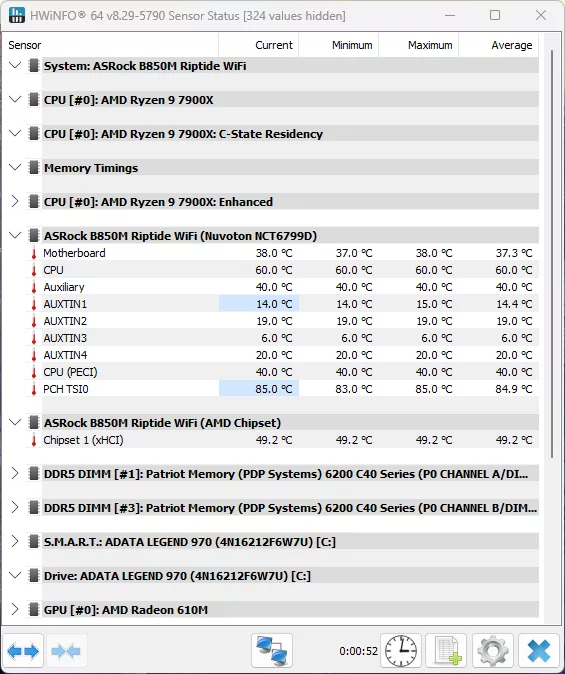
Introduction
We have the ASRock B850M Phantom Gaming Riptide WiFi in the offices today to put through the ringer. The B850M Riptide WIFI is the latest in ASRock’s Phantom Gaming series. As a reminder, the Phantom Gaming line is ASRock’s line of products targeted at the Gaming market and sits right below ASRock’s premier Taichi line.
With a total of three (3) NVME M.2 drives, heatsinks for two (2) of those drives, and the inclusion of metal reinforcement on the primary PCIe slot, the ASRock B850M Phantom Gaming Riptide WiFi has many features found on more expensive B850 motherboards. With a price tag of around $189.99, the question is, can it hang with them when it comes to our testing?
Packaging and Contents
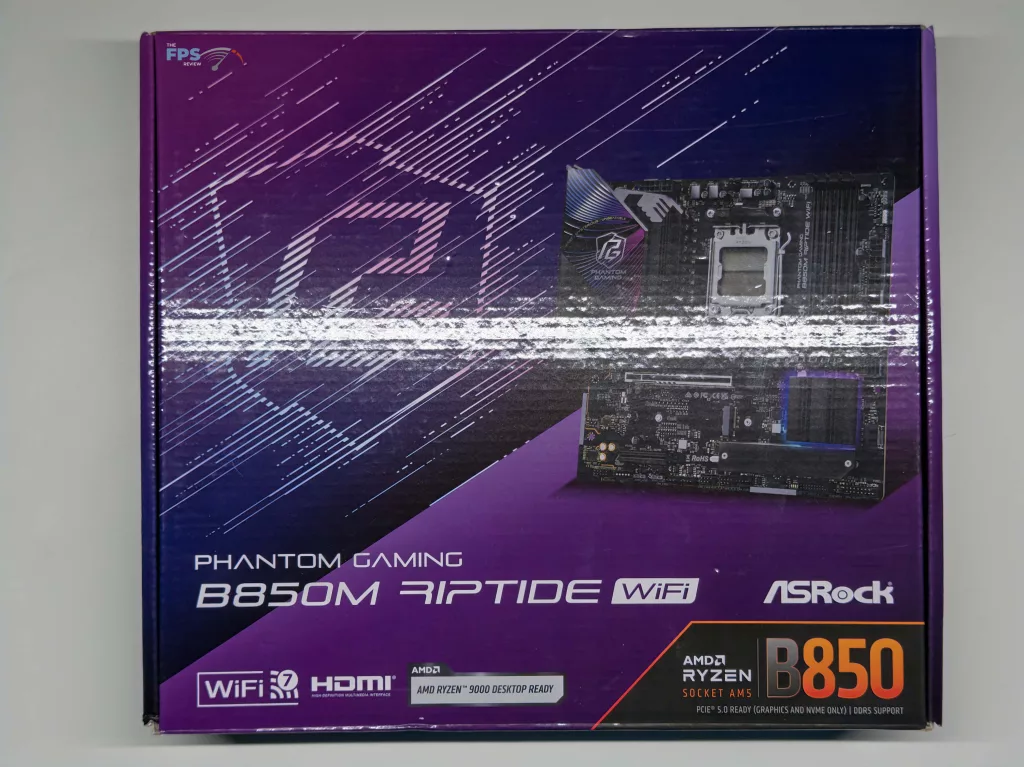
At the sub $200 price point that the ASRock B850M Phantom Gaming Riptide WiFi comes in at, there is not much that comes with it in the box. Once you open the box, you will find a well-packaged motherboard with all the accessories sitting on top of the packaging. You will find antennas for the WIFI, two (2) SATA cables, two (2) screws for the M2 sockets for those that prefer them, an additional standoff for an M2 socket, and a Phantom Gaming case badge. The last thing you will find is an interesting one for the price point, ASRock has included a Thermistor cable for in-case temperature monitoring and fan control, something we don’t see often on a sub $200 motherboard.
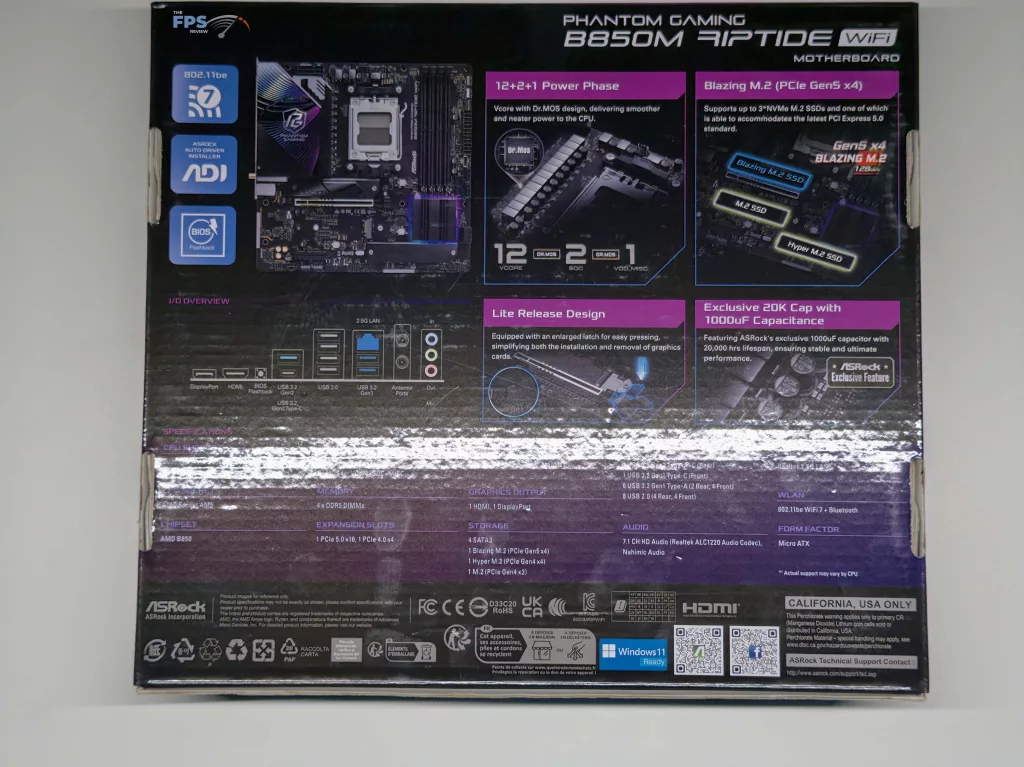

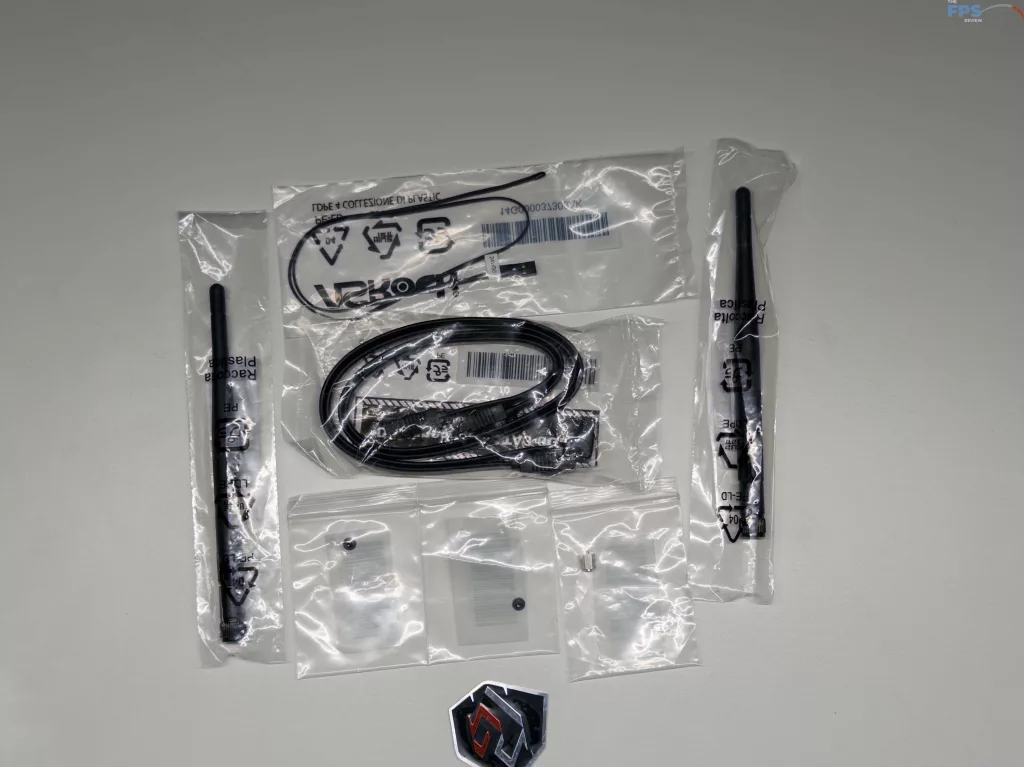
ASRock B850M Riptide WIFI Features

The ASRock B850M Riptide WIFI continues ASRock’s Phantom Gaming color scheme of being predominantly black, with blue and pinkish accent colors, and looks quite similar to most previous Phantom Gaming Riptide motherboards we have reviewed in the past. For a mATX motherboard, ASRock has included a fair amount of features on the B850M Riptide. You will find three (3) NVMe M.2 slots, two (2) with heatsinks, and an additional four (4) SATA ports for large capacity storage drives. Beyond this, there are a total of three (3) USB 3 Type-A ports, one (1) USB 3 Type-C port, and four (4) USB 2.0 ports on the rear I/O for further expansion.
Power Delivery
With the ASRock B850M Riptide WIFI being an mATX motherboard, ASRock has decided to go with a 12+2+1 power phase design. Don’t worry, though it might not have as large or robust of a power delivery compared to its larger cousin’s in the Phantom Gaming line, the 12+2+1 DRPS system used here is more than adequate for the average user. In our testing, we saw no issues with AMD’s Precision Boost Overdrive (PBO), while temperatures were kept to acceptable levels. More on this in our testing portion of the review.
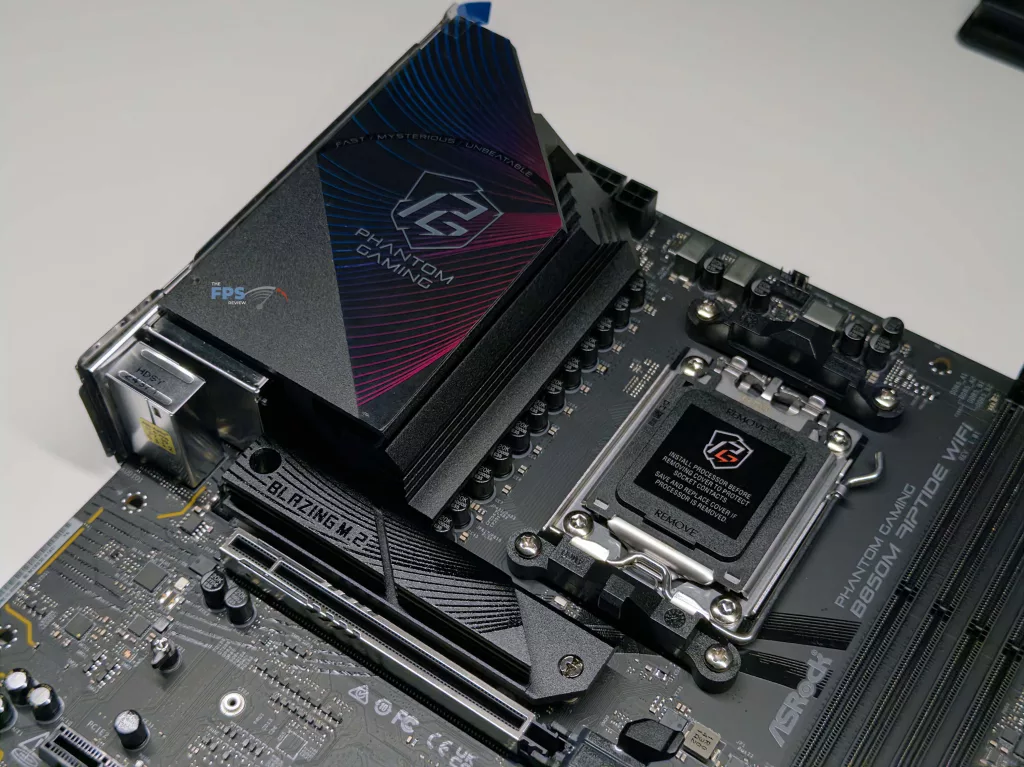
Memory and Storage
As with all current-generation AMD motherboards, the ASRock B850M Riptide WIFI uses DDR5, unbuffered, non-EC memory, with a maximum capacity of 64 GB per slot (256 GB total). Users also have the ability to use AMD’s Extended Profiles for Overclocking (EXPO) settings for quick and easy overclocking of your RAM. In fact, ASRock claims this motherboard can reach speeds in excess of 8,000 MT/s, though we are only able to test up to 6,200 MT/s speeds with our trusty Patriot kit, which had no issues getting to its max speeds.
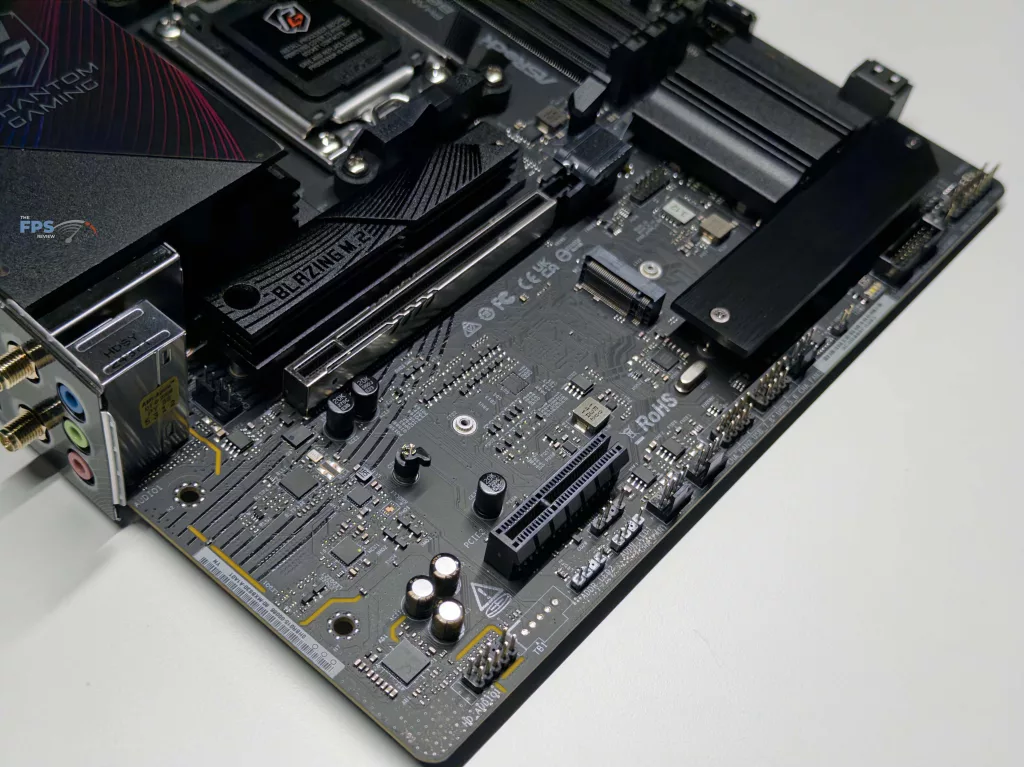
There are a total of three (3) M.2 slots intended for NVMe storage devices up to 2280 physical size (M2_2/M2_3 can support 2260 sizes as well). All three slots are located in the usual locations around the PCIe ports, with M2_1 and M2_3 having heat sinks provided to aid with cooling on current generation NVMe drives; however, the proximity of M2_1 to the VRM cooling will make it difficult to use any NVMe drive with heat pipes (Like our MSI 570). The top slot(M2_1) is the “Blazing M.2” slot for Gen5 speeds, while the bottom most slot (M2_3) is a “Hyper M.2” slot for Gen4 connection, with a full four (4) lanes available, the remaining slot (M2_2) is also a Gen4 slot, however it only has two (2) lanes available which does lower its maximum speed. It is important to note that both heat sinks for the M.2 slots are not tool-less and will require a small Phillips screw driver to remove, preferably with a magnetic tip, as only the Gen5 heat sink has screws that will not fall out.
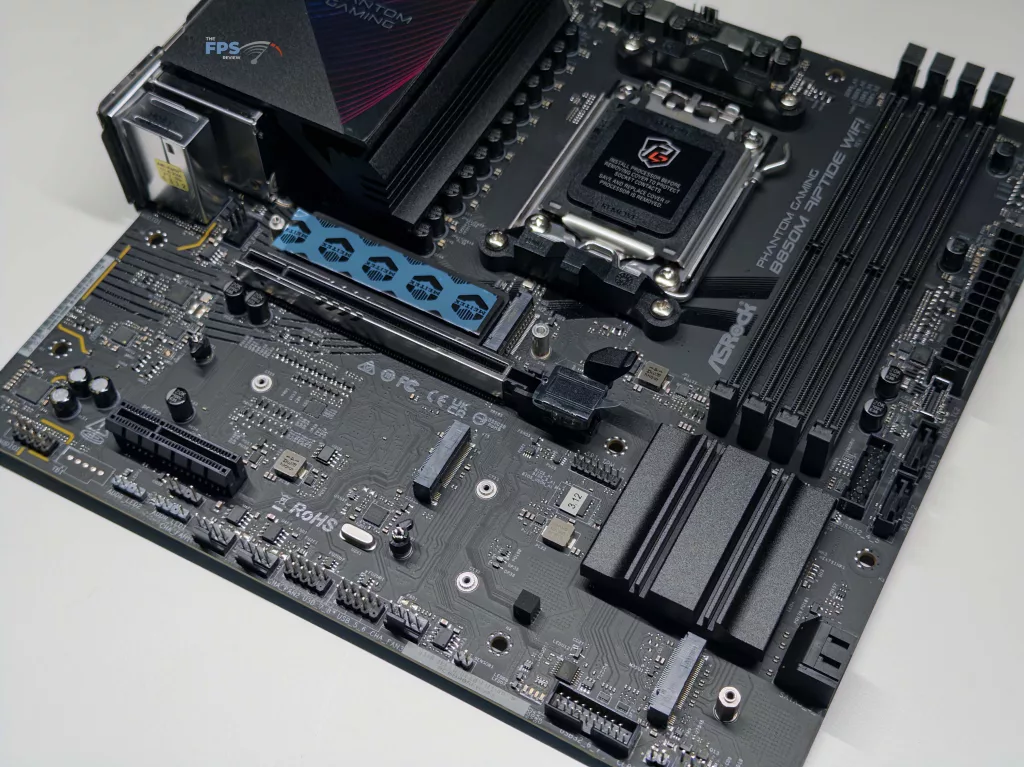
The last thing we want to mention is that ASRock has provided four (4) total SATA 6 GB/s ports for any additional storage the end user might want to include.
Expansion
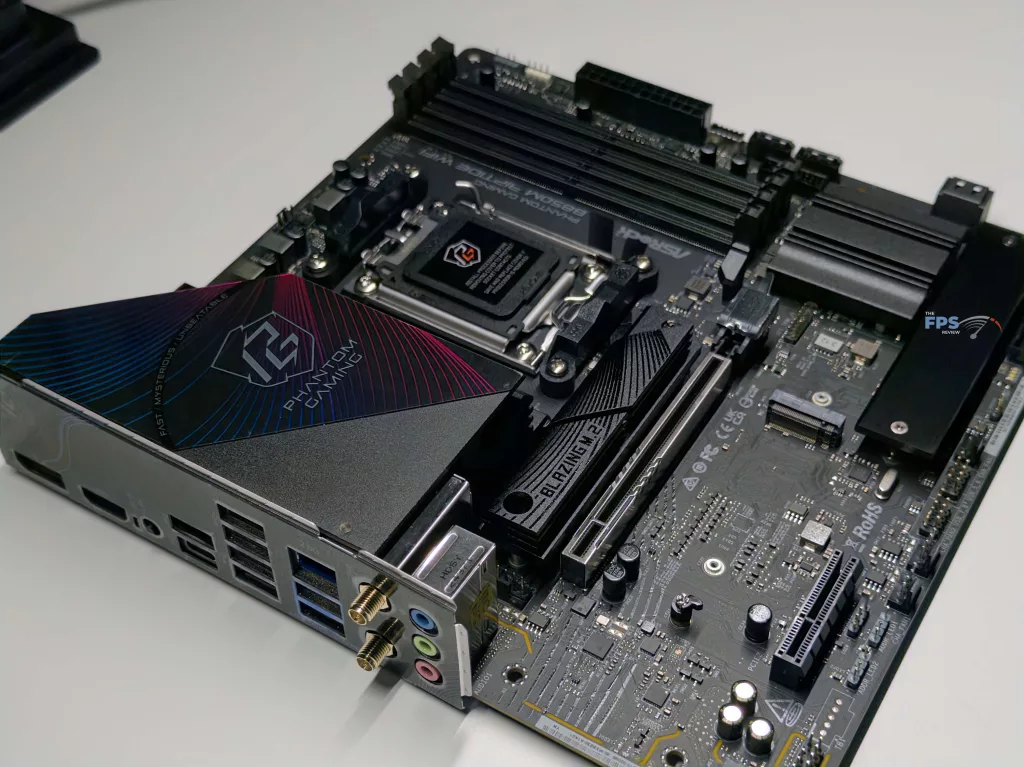
The ASRock B850M Riptide WIFI has what we would call one and a half total PCIe slots. The uppermost slot is a PCIe 5.0 x16 full slot, while the lower slot is a PCIe 4.0 x4 slot that is long enough for the 4 lanes, and that is it. This is how ASRock was able to fit the third M.2 slot (M2_3) on the front of this motherboard, and makes it so this slot can only be used by an x16 card when M2_3 is not in use and the cooler is not installed. For the first slot, ASRock has added metal reinforcement, which is becoming a standard on most recent-generation motherboards. They have also added an oversized retention clip for securing the full-sized PCIe slot in, which is nice to see for those who have backplates on their graphics cards, but it would have been nice to see a remote latch like we have seen on other motherboards in recent reviews.
I/O
I/O on the ASRock B850M Riptide WIFI is in line with what we have come to expect on a sub $200 motherboard. On the rear I/O panel, there are two options for monitor connection with the HDMI and DisplayPort. Peripherals and storage expansion can be achieved by a total of eight (8) USB ports. Of these ports, one (1) is a Type-C Gen 2 10 Gb/s port, one Type-A Gen 2 10 Gb/s port, two (2) Type-A Gen 1 ports, and four (4) USB Type-A 2.0 ports. After this, there is a single RJ-45 network port providing 2.5 Gigabit speeds through a Dragon RTL8125BG chipset, and two antenna ports for use with the pre-installed MediaTek RZ717 M.2 card giving the user WIFI 7 connectivity and Bluetooth 5.4. Finally, there is a BIOS flashback button, along with three audio jacks for up to 7.1 channel surround sound from the Realtek ALC1220 audio codec.
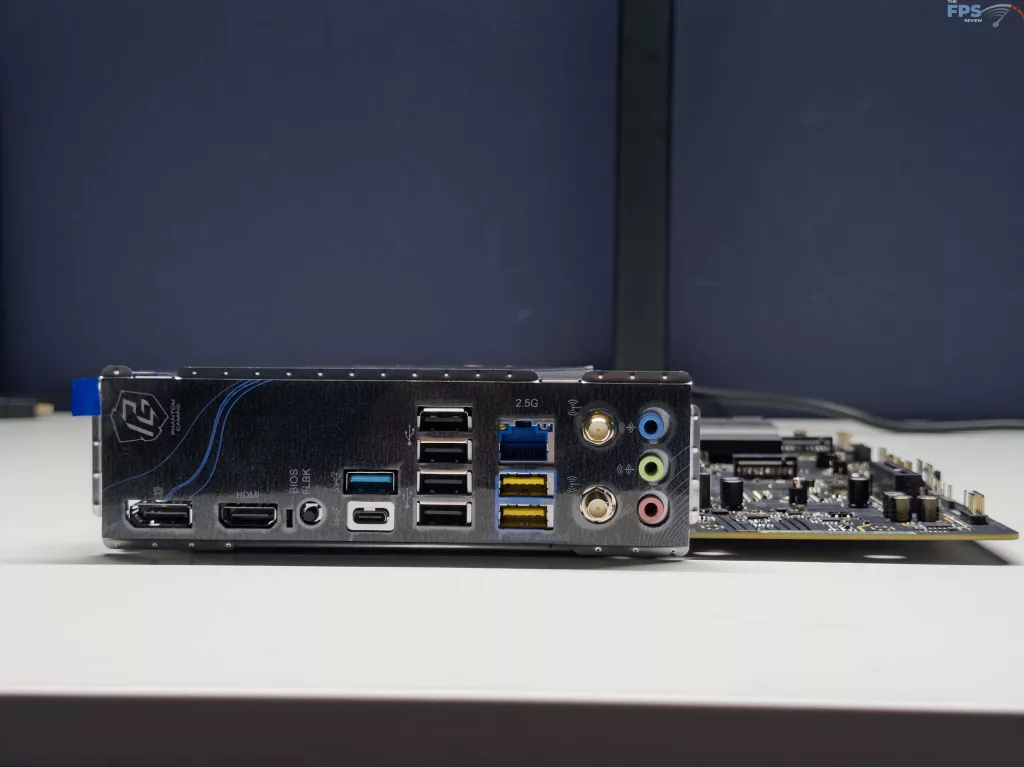
Beyond what is available on the rear I/O, users have the option to add an additional USB Gen 1 Type-C port, four (4) more USB Type-A Gen1 ports, and four (4) more USB 2.0 Type-A ports from headers on the motherboard itself. After this, there is a connector for the thermistor cable, one (1) standard RGB LED Header, three (3) A-RGB headers, and five (5) total 4-pin fan connectors for fans and pumps.
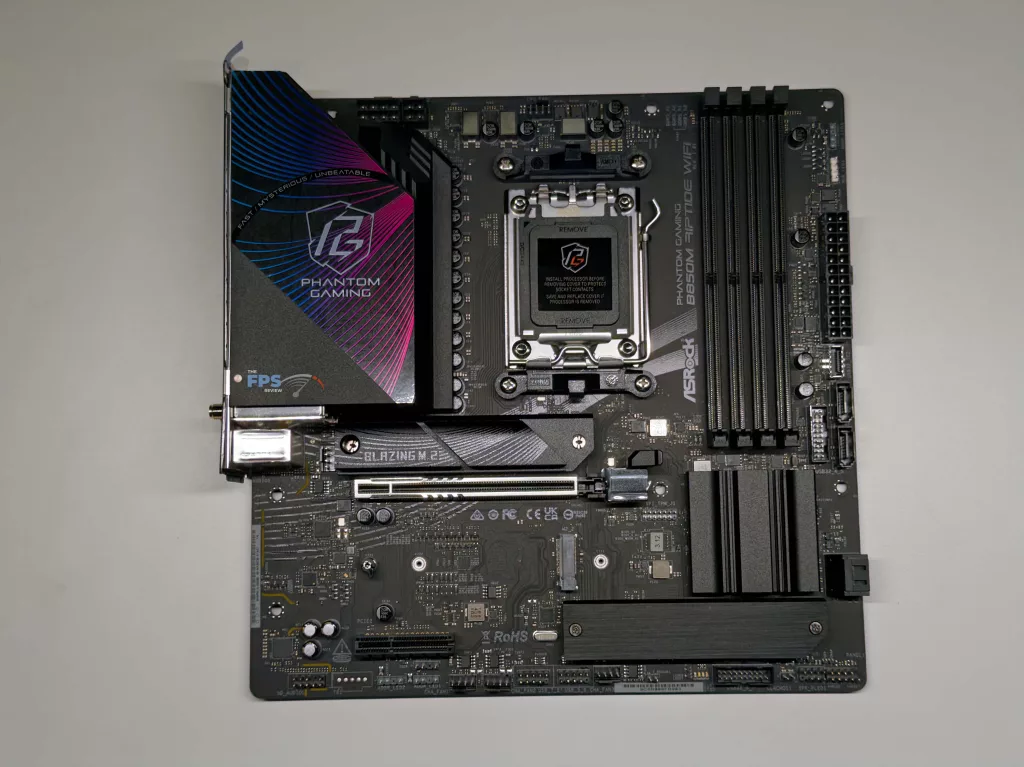
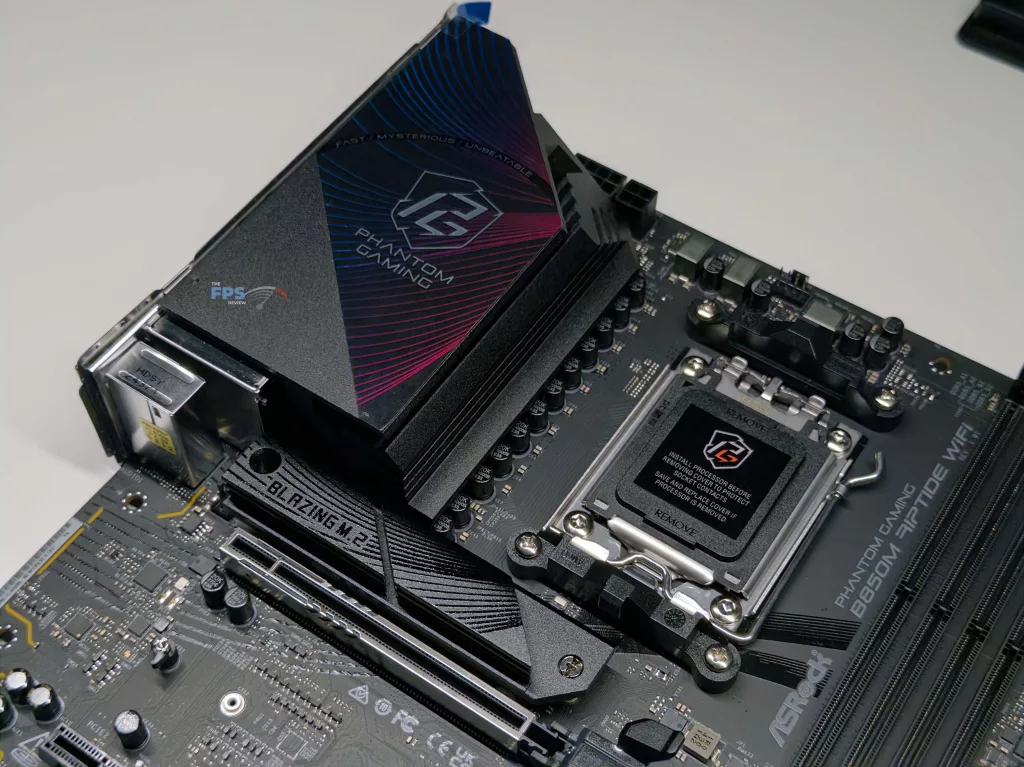
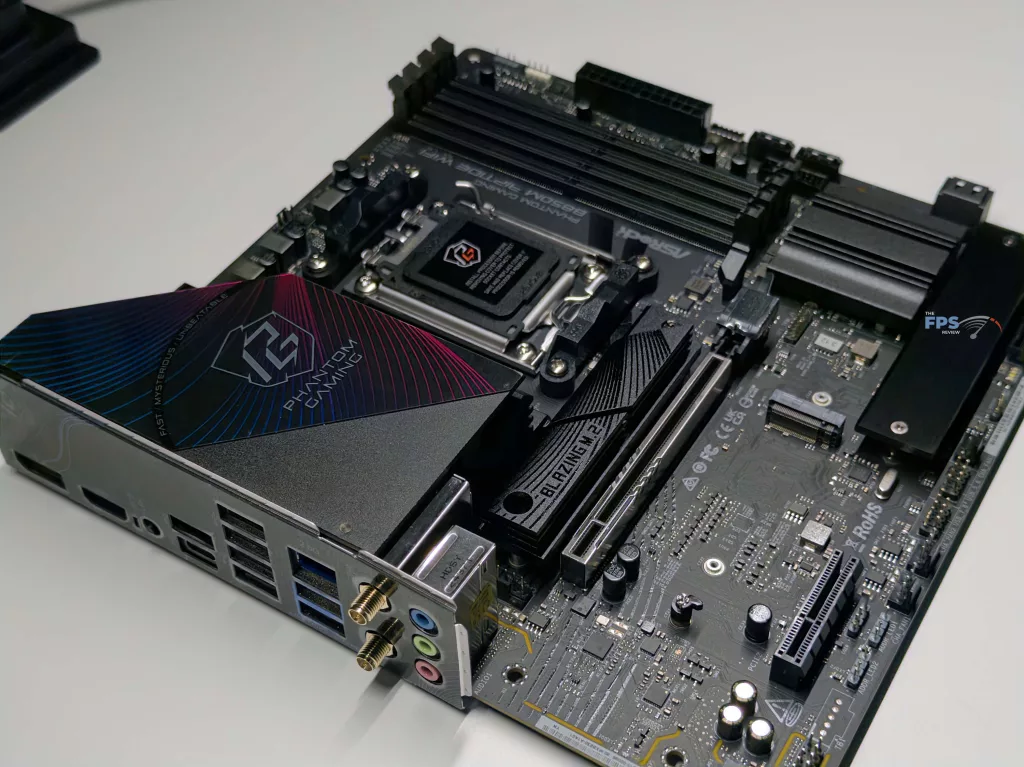

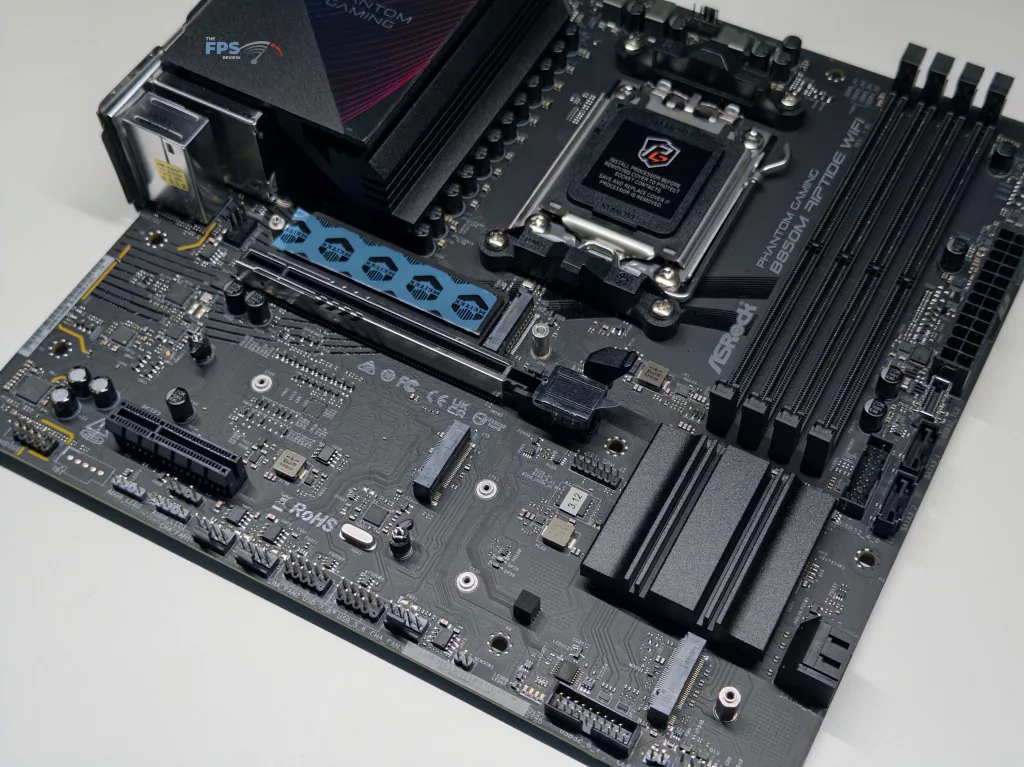
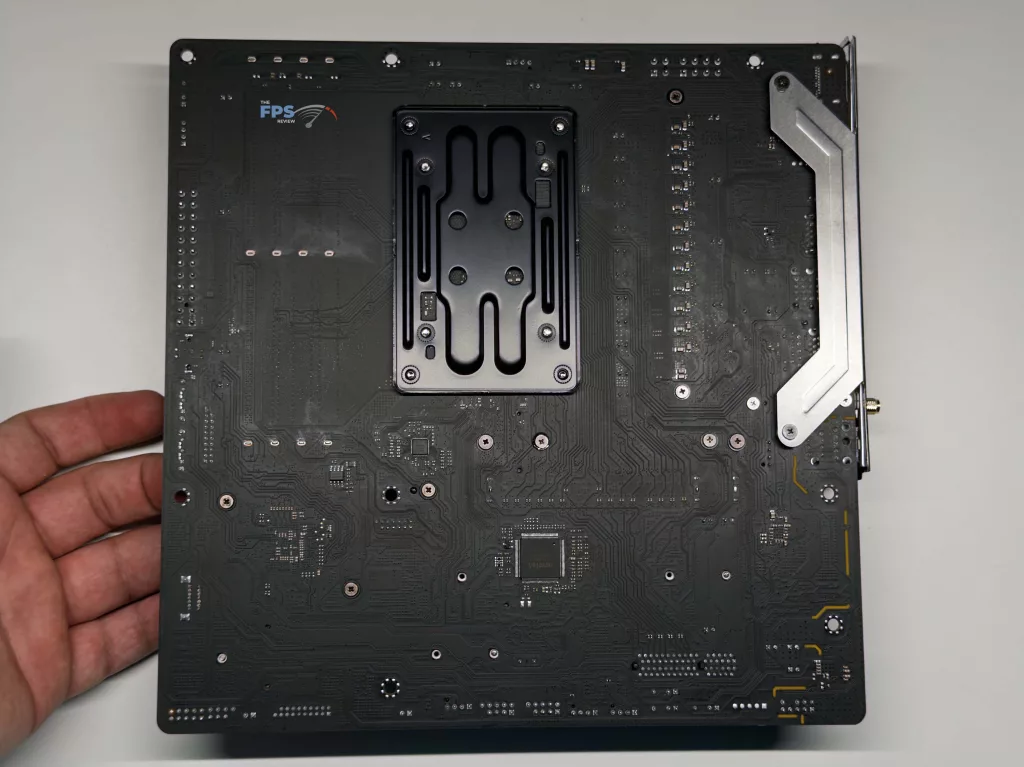
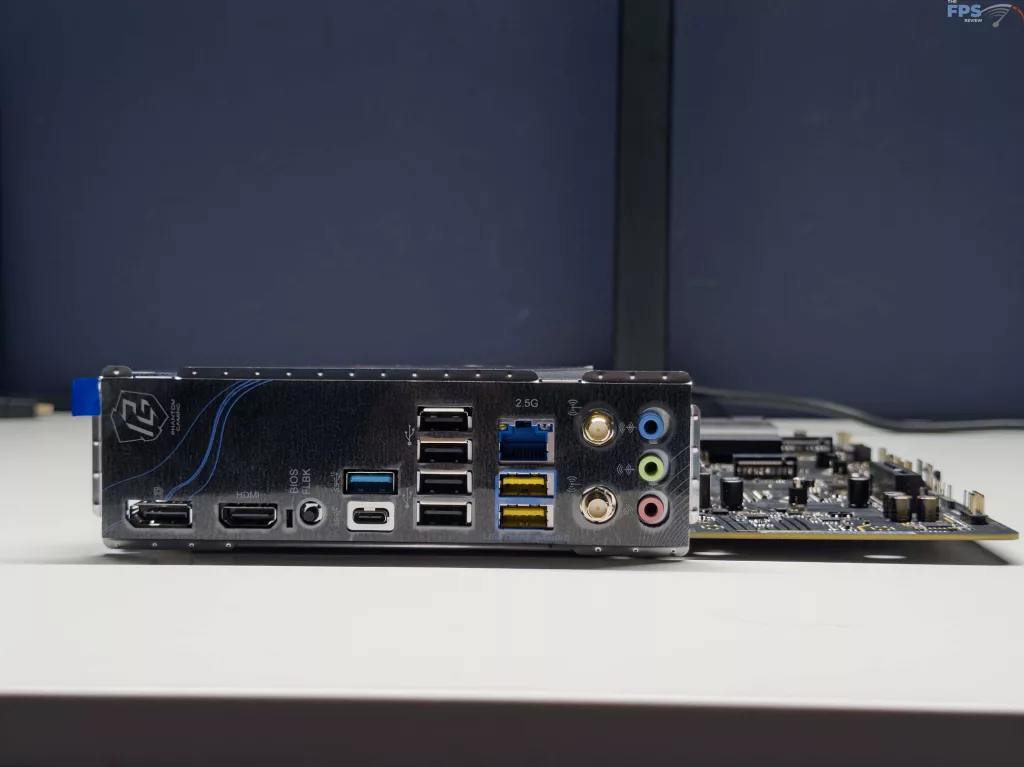
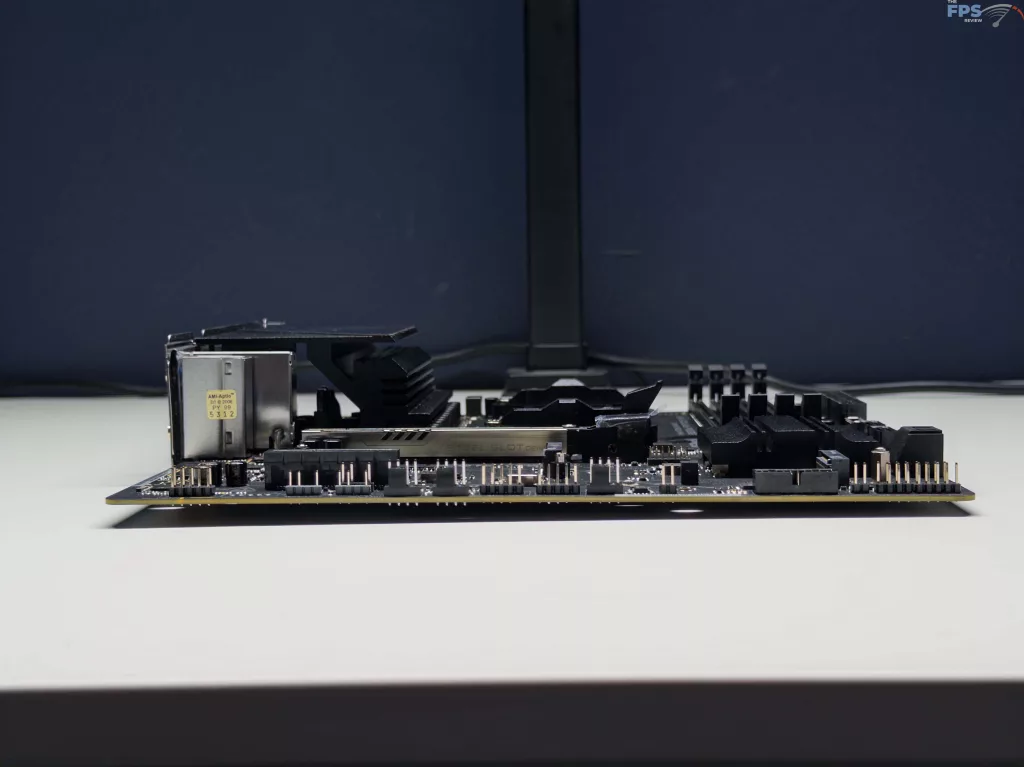
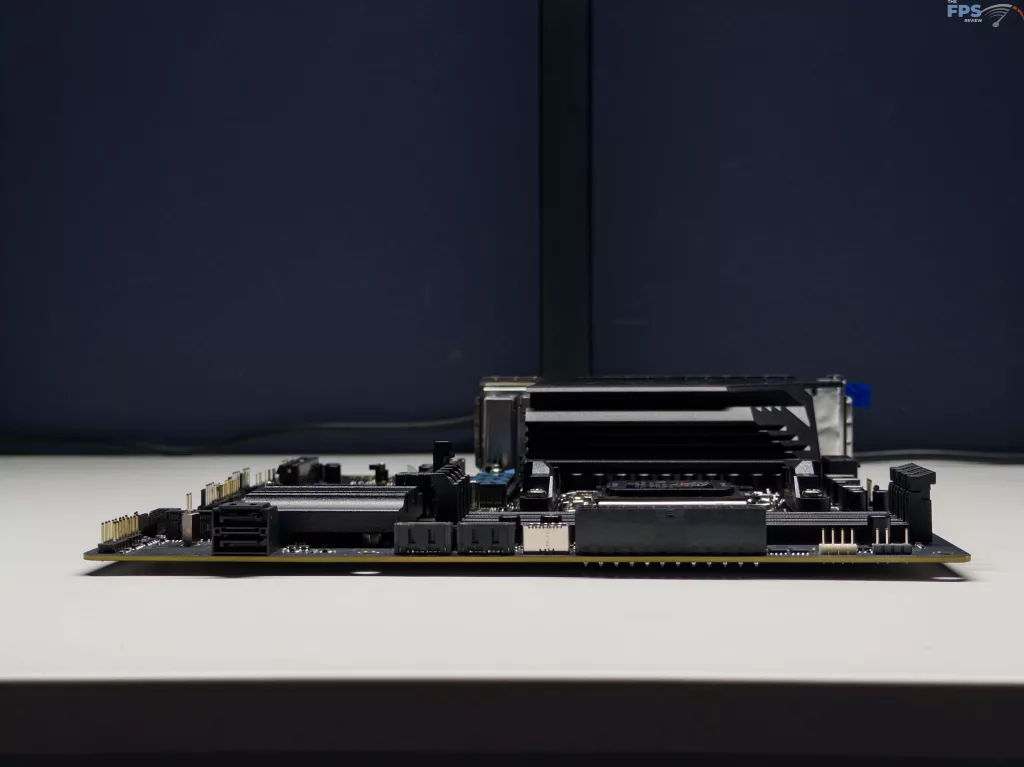
UEFI
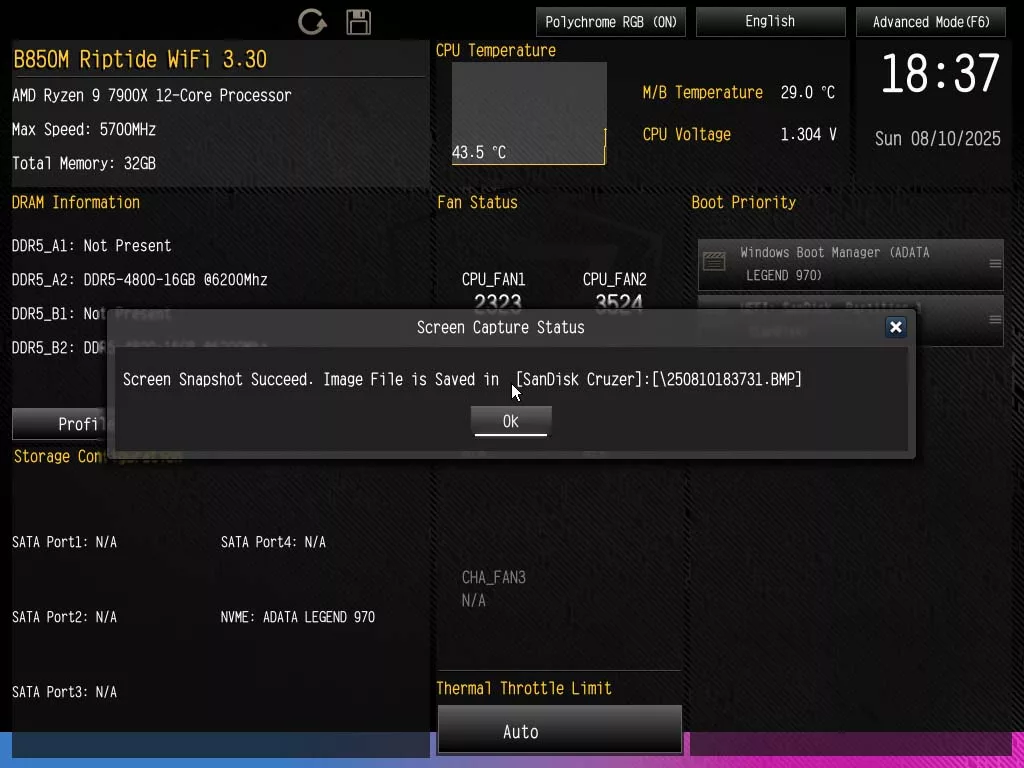
ASRock has kept the BIOS simple with the ASRock B850M Riptide WIFI, and when we first entered the BIOS, we were greeted with the Advanced Mode of the UEFI. Similar to most ASRock UEFIs, you can swap between this and the Easy Mode with a push of the F6 key.
From Easy Mode, you see quick information on CPU temperature and voltages, fan speeds, RAM information, and SATA storage information, along with boot priority options. Following this, when you go into the Advanced Mode tabs, you will see some of the same information, such as CPU speed, memory amount, and memory speed/settings. Outside of the main tab, there are plenty of options for OC options, which can be found both on the “OC Tweaker” tab as well as deeper in the “Advanced” tab menus. Outside of these tabs, there is not much special in this UEFI; however, we do want to call attention to the “H/W Monitor” tab, as this is going to be the easiest way to set speeds directly for all fan headers, and to access ASRock’s Fan-tastic tool for controlling fan speed based on temperature readings. For all other parts of the UEFI we have included a full gallery below covering the majority of the UEFI options available.
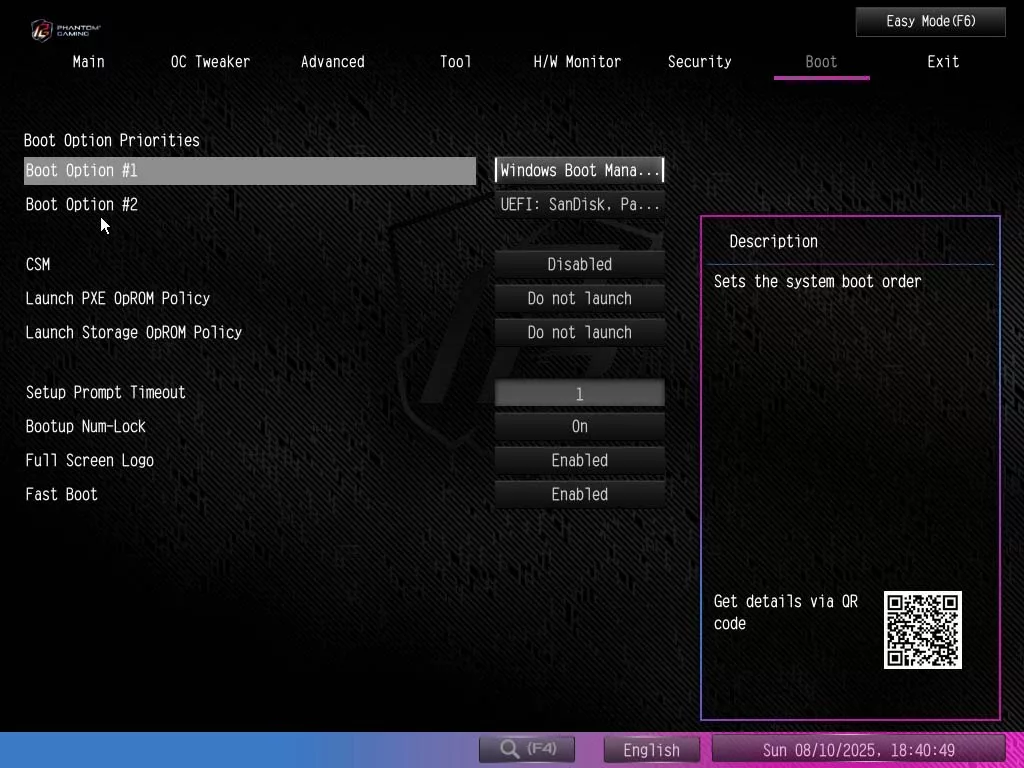
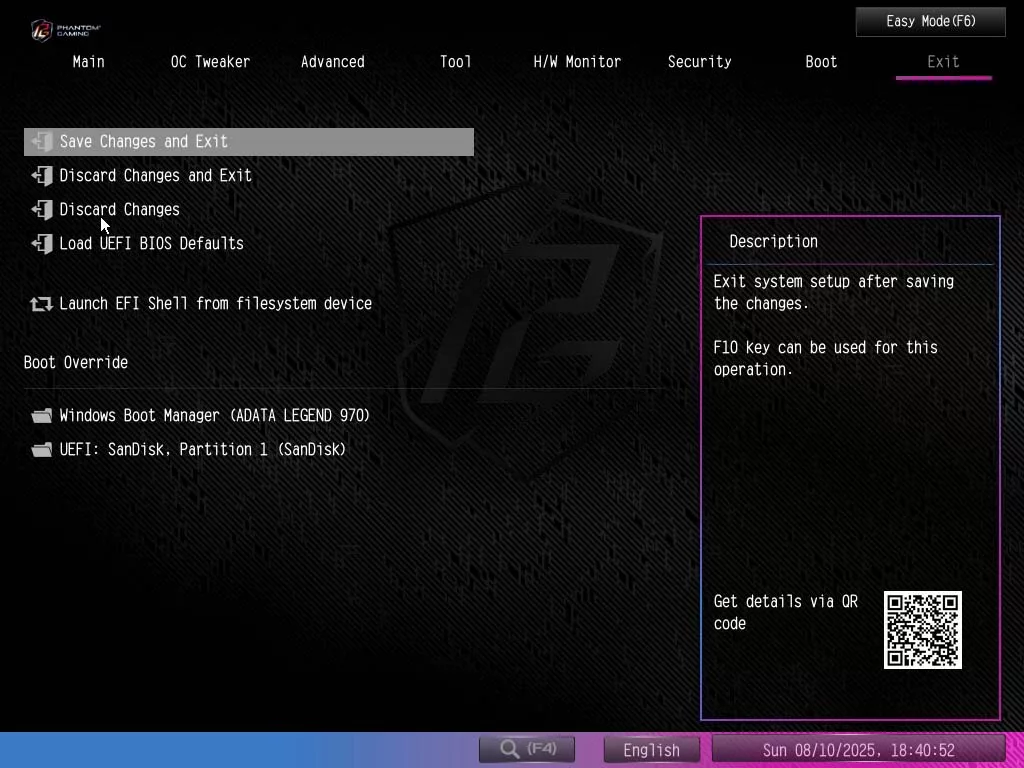
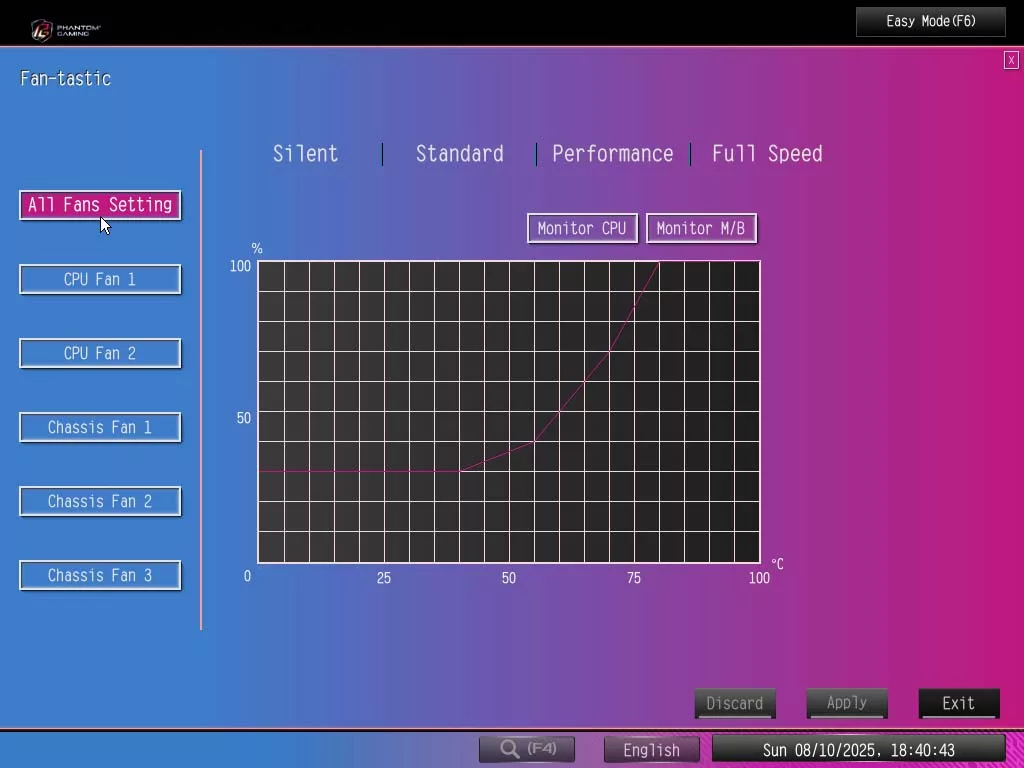
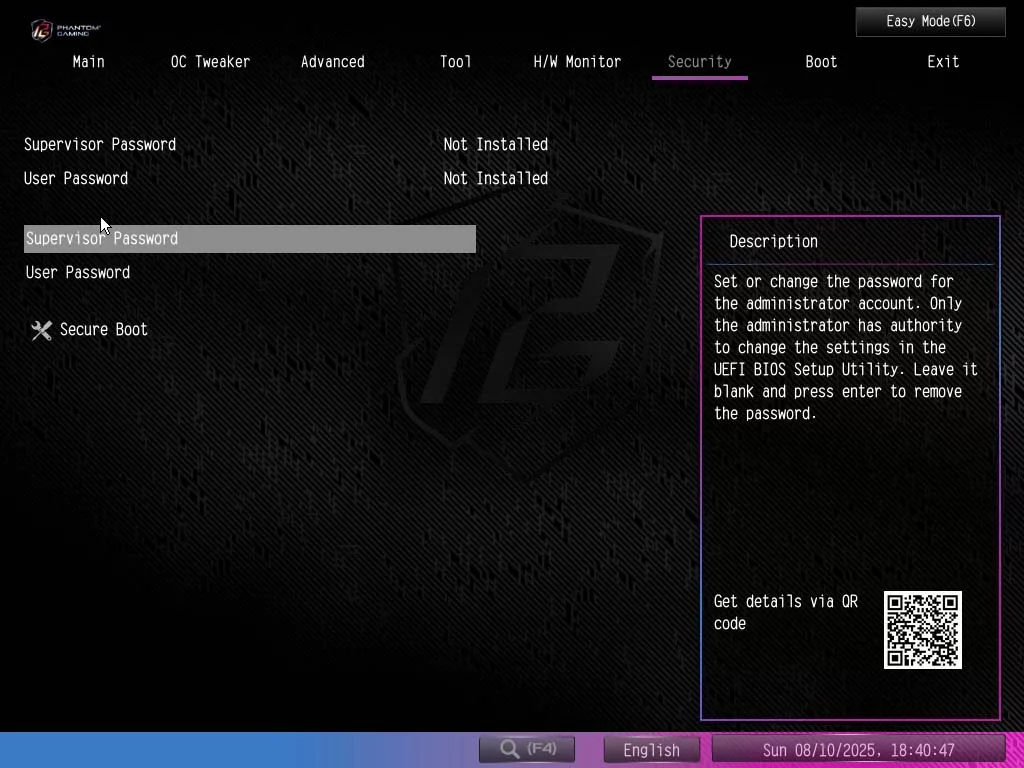
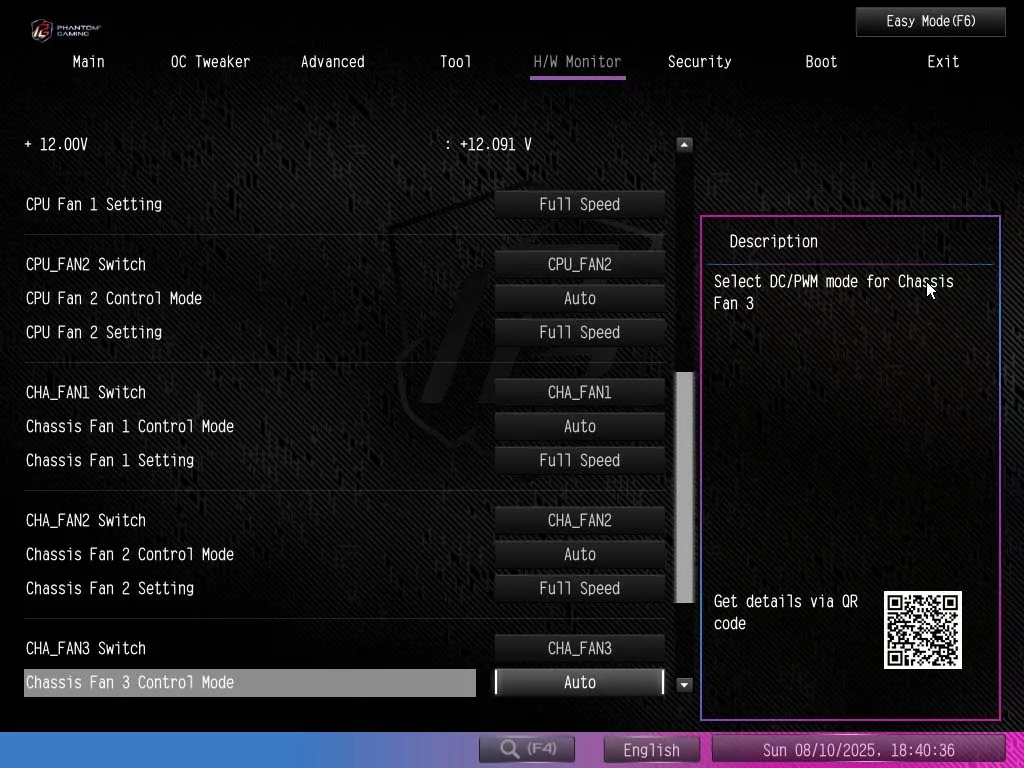
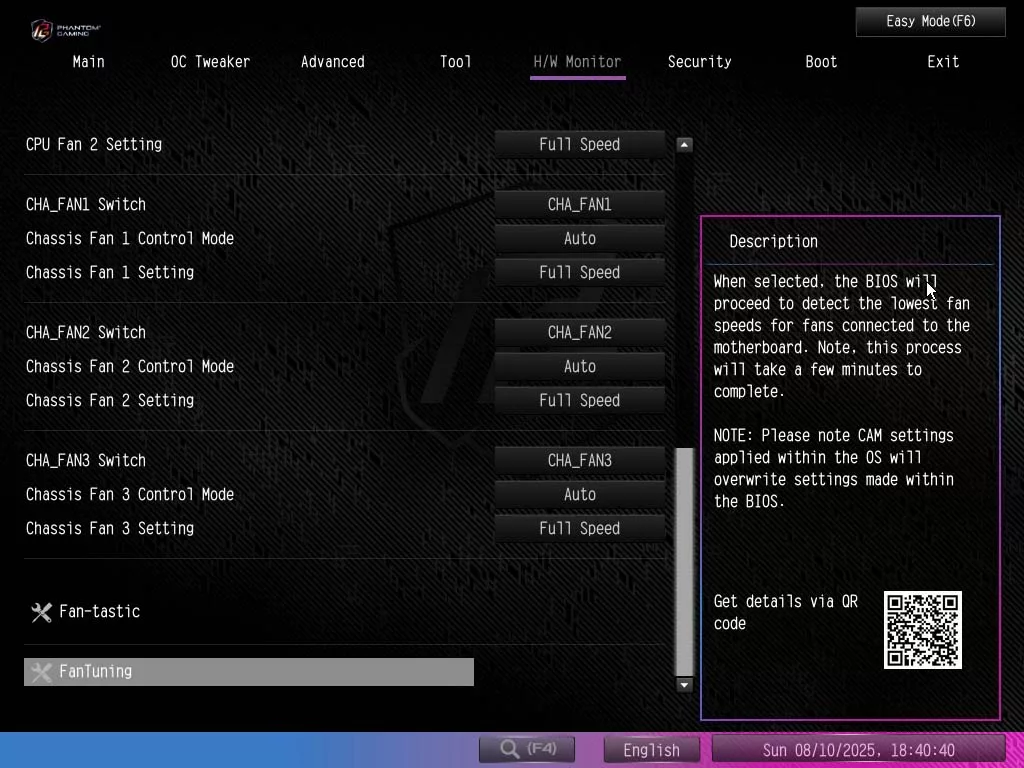

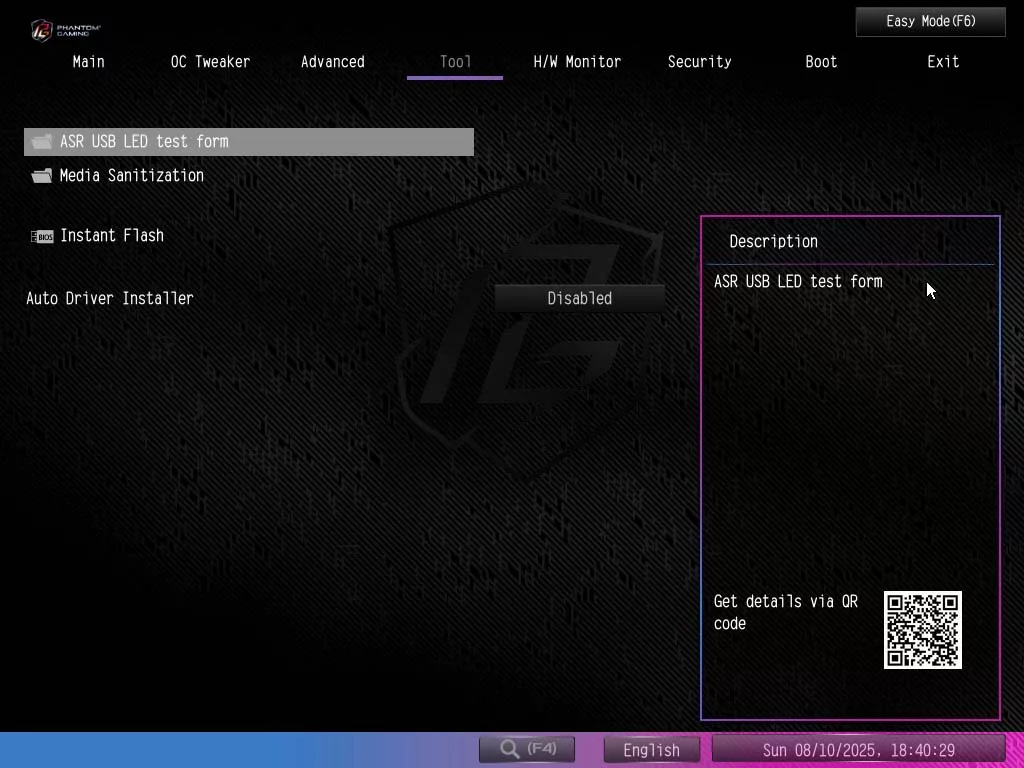
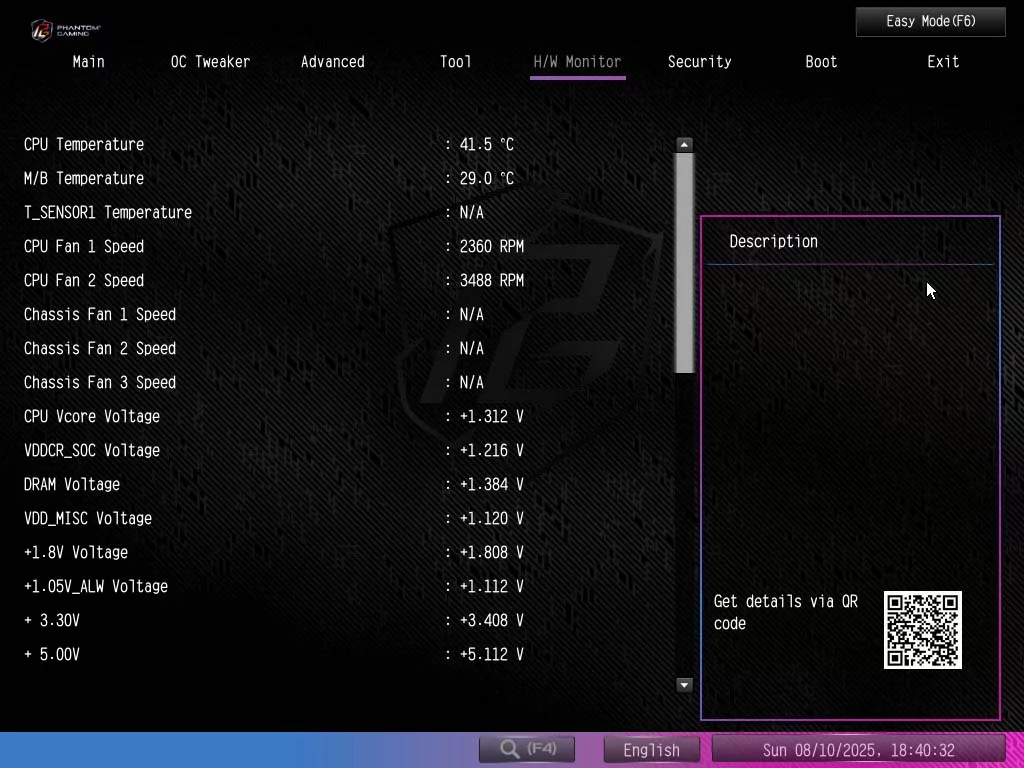
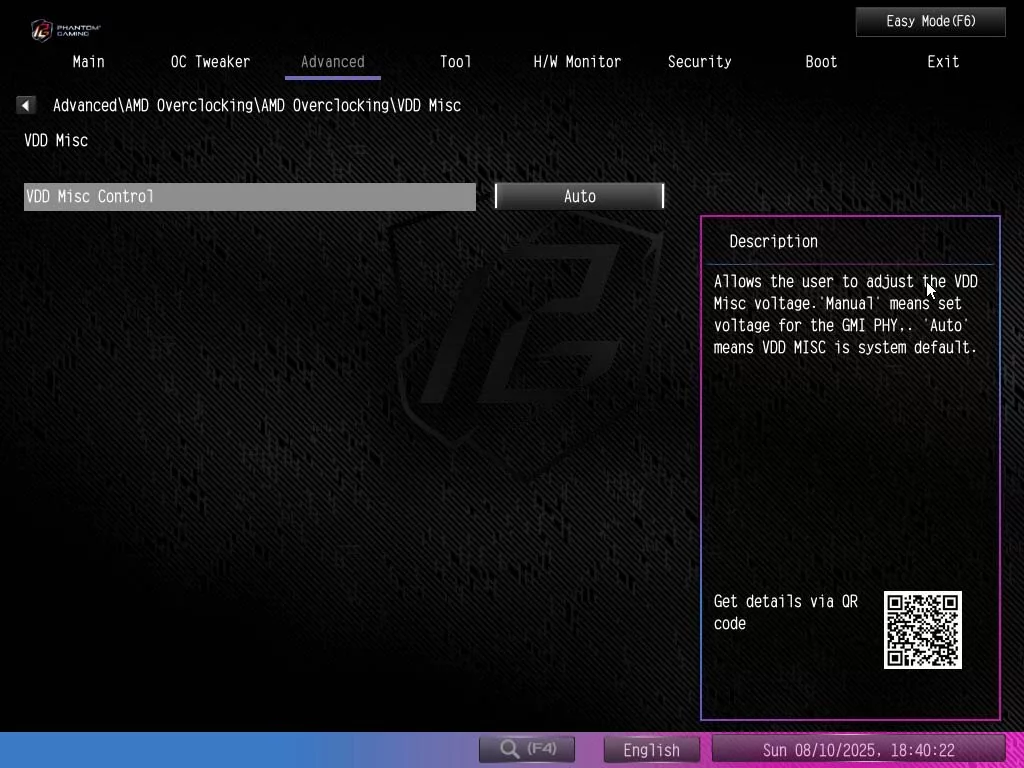
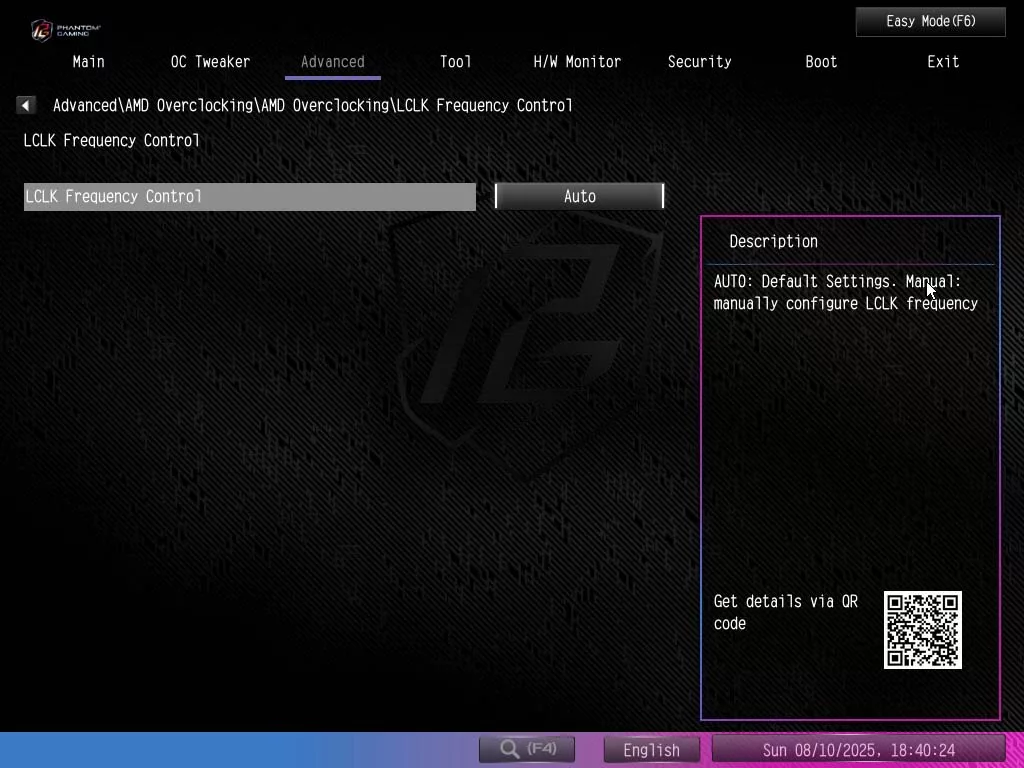
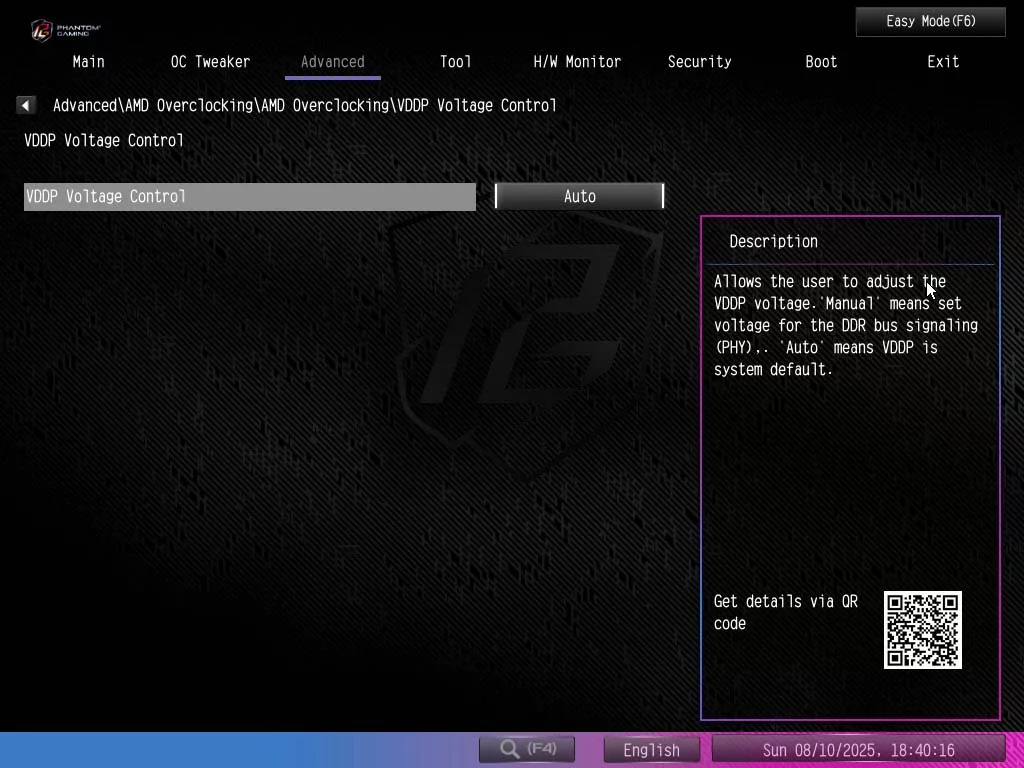
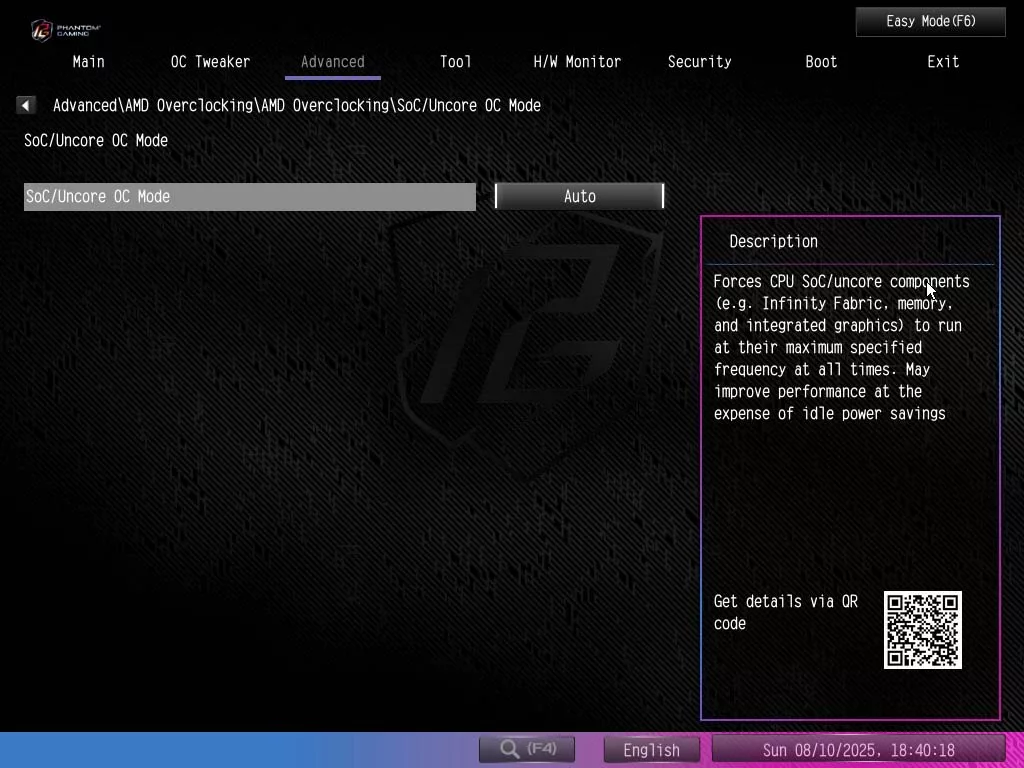
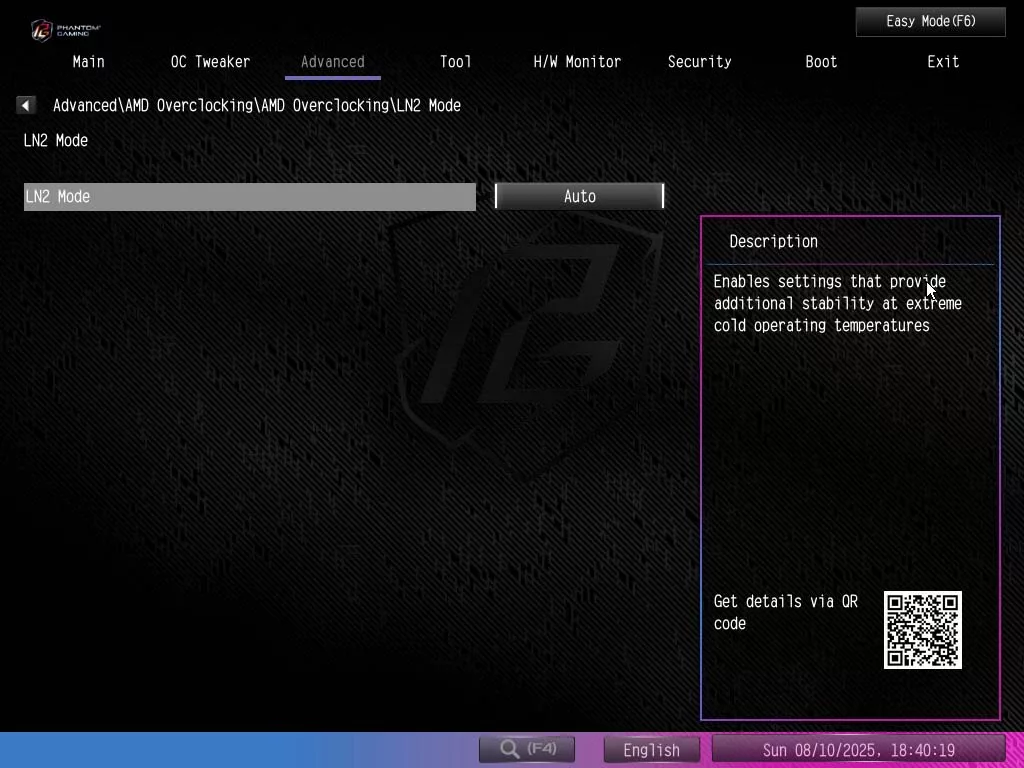
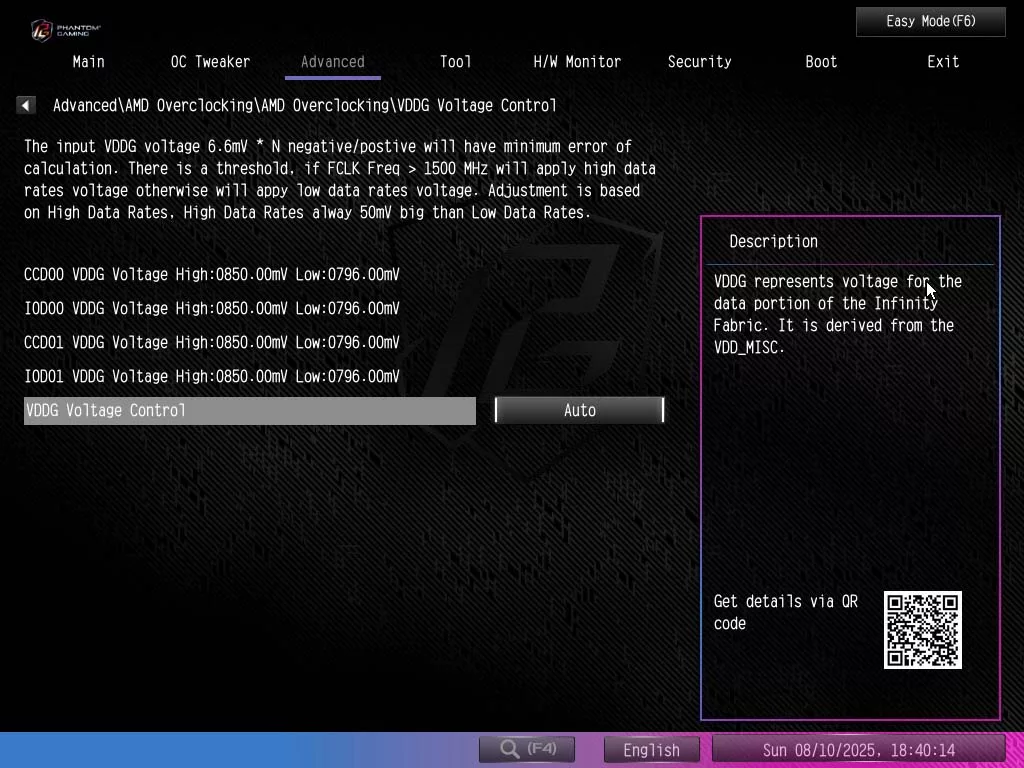
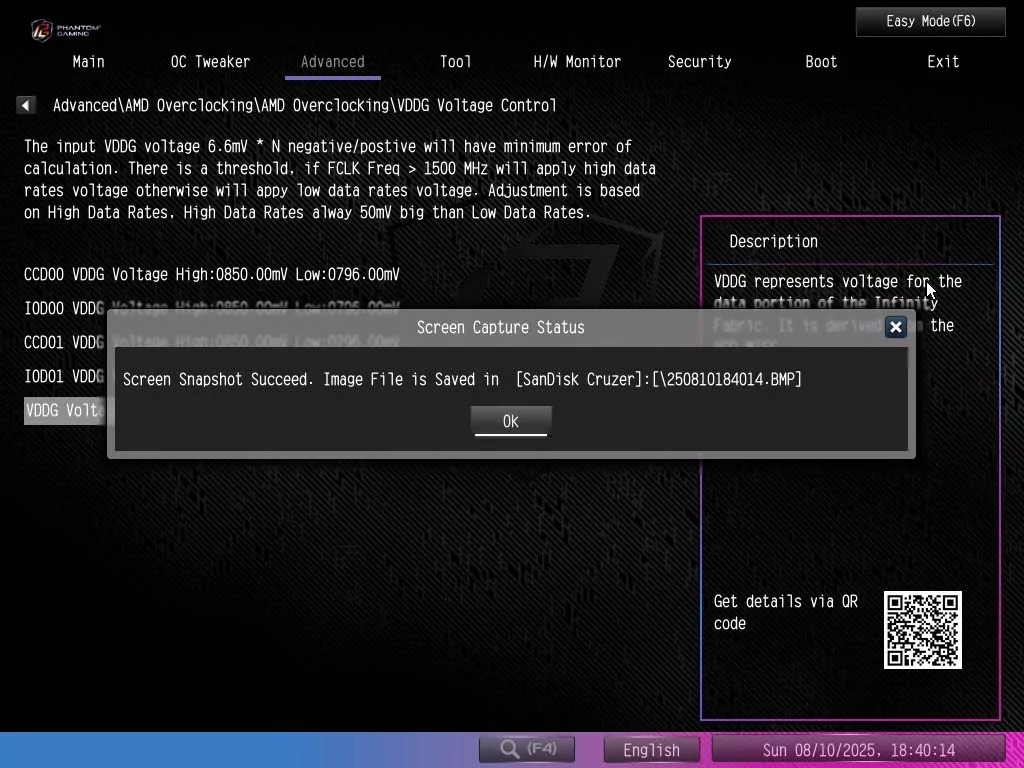
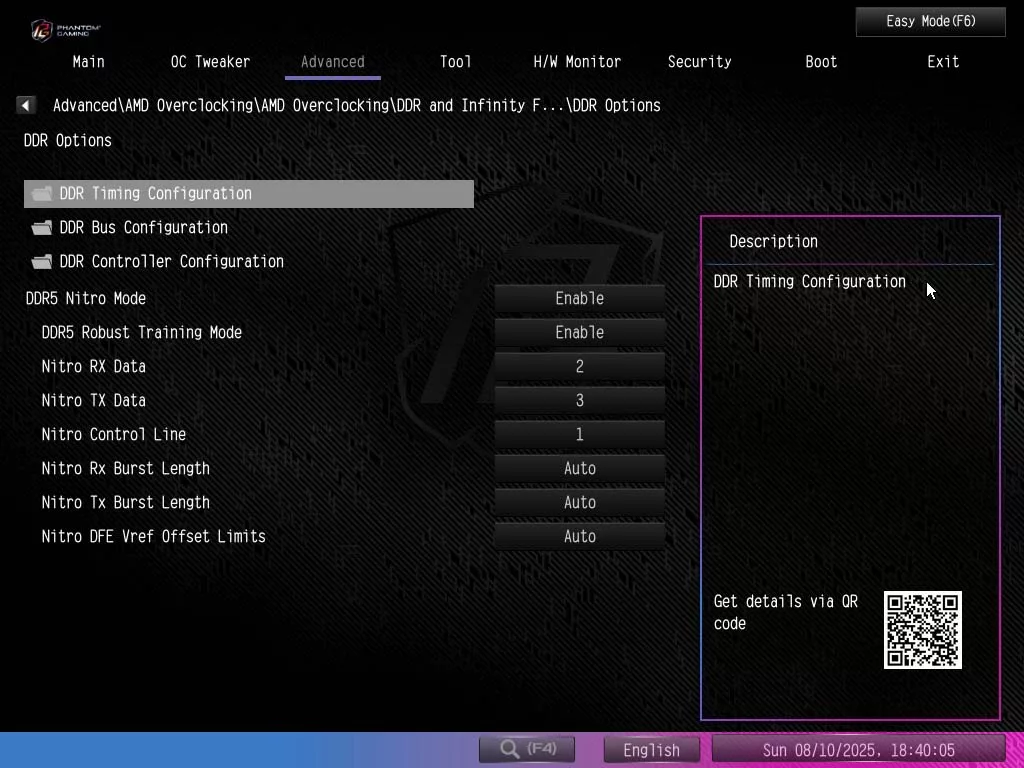
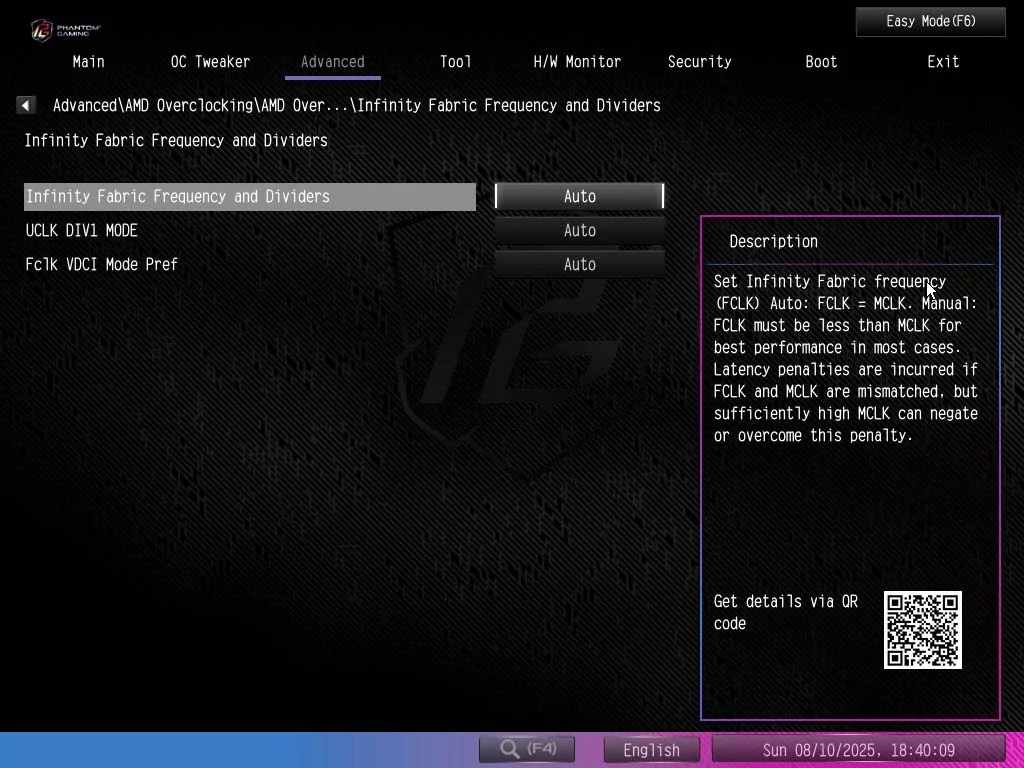
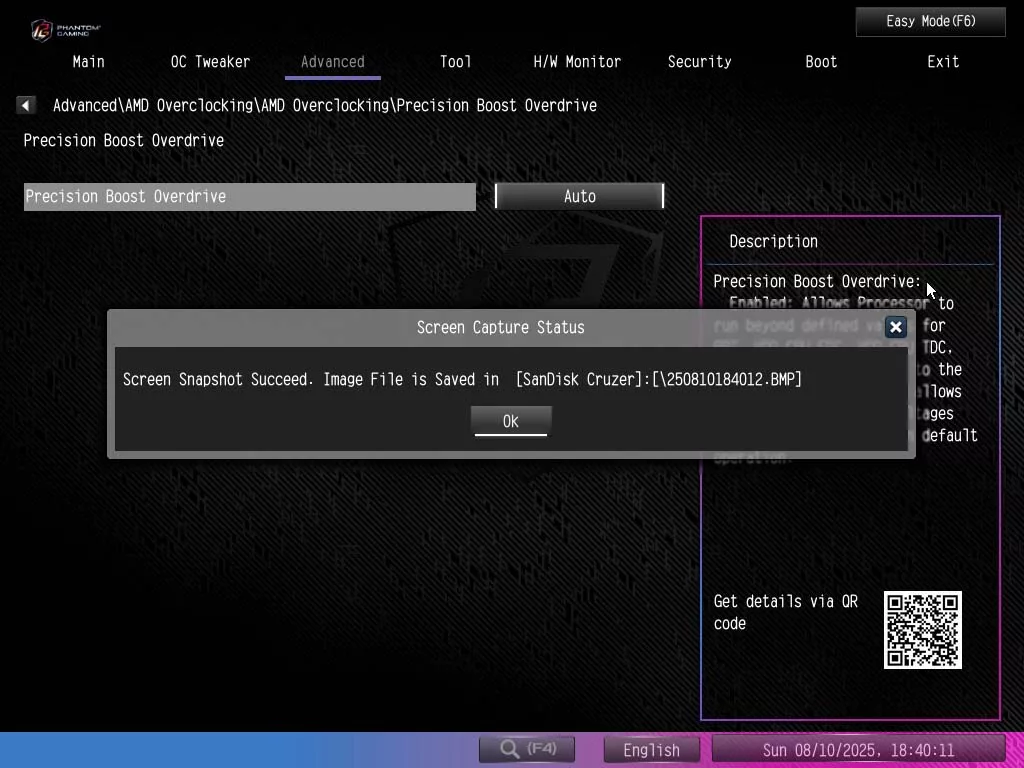
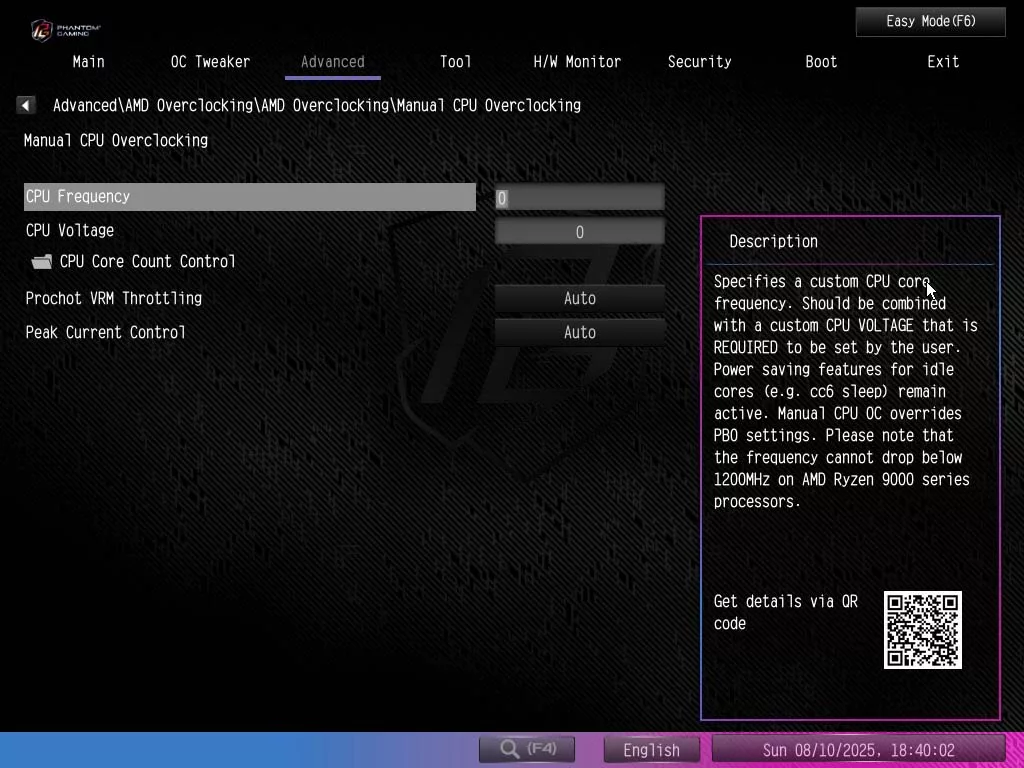
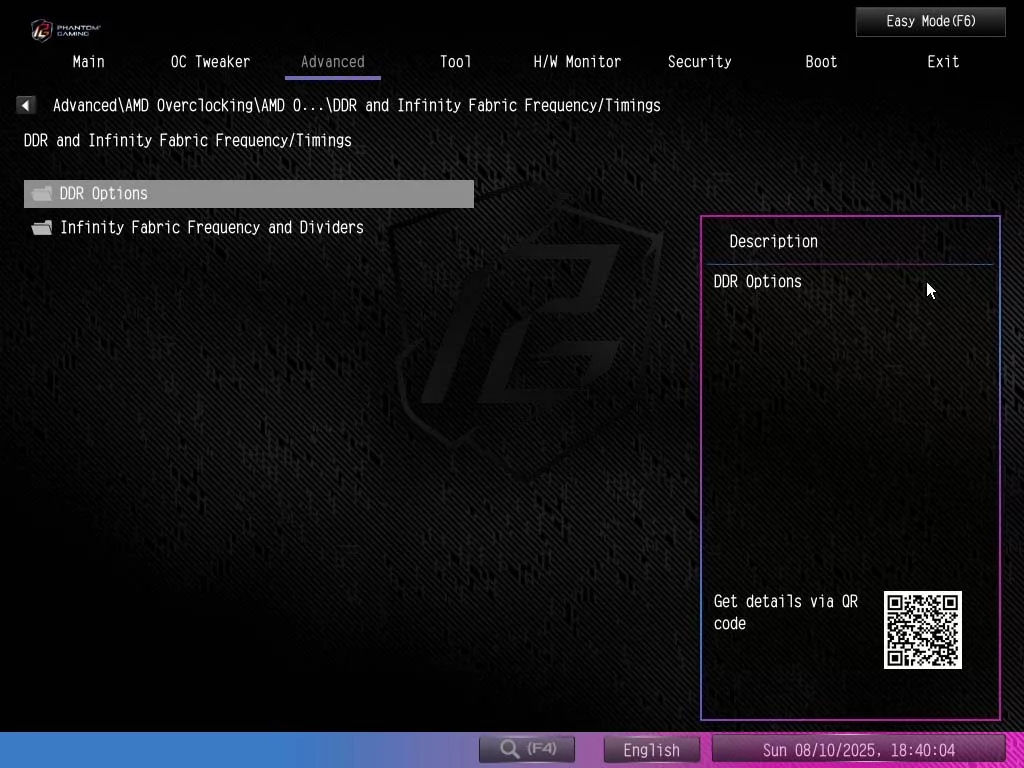
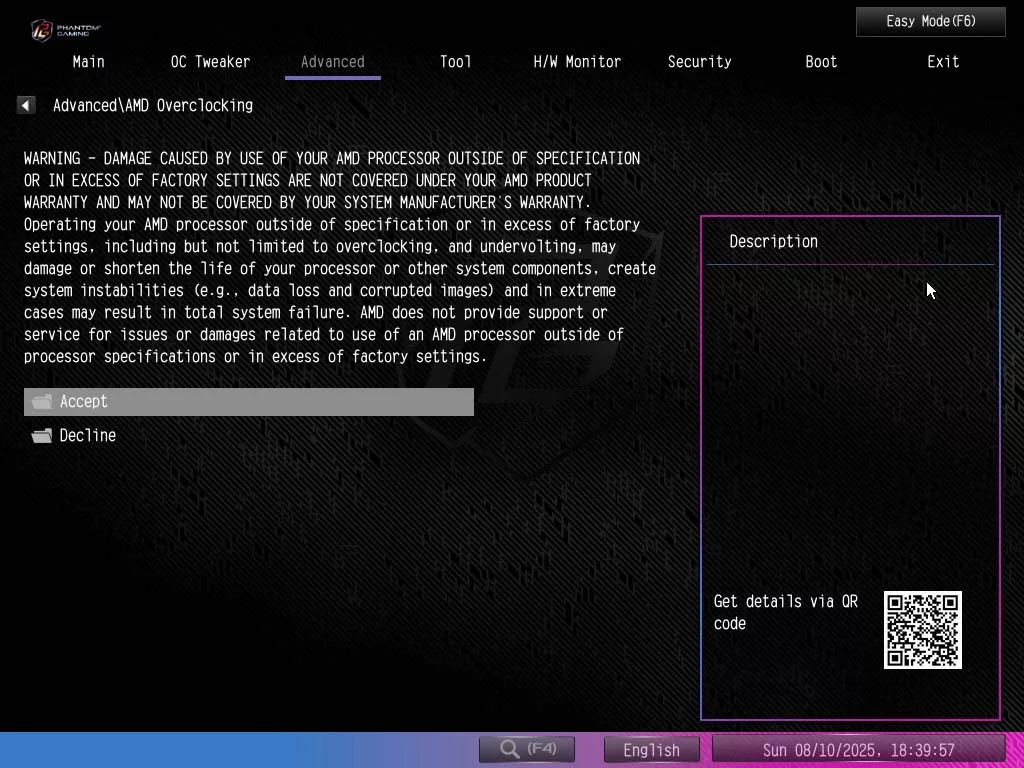
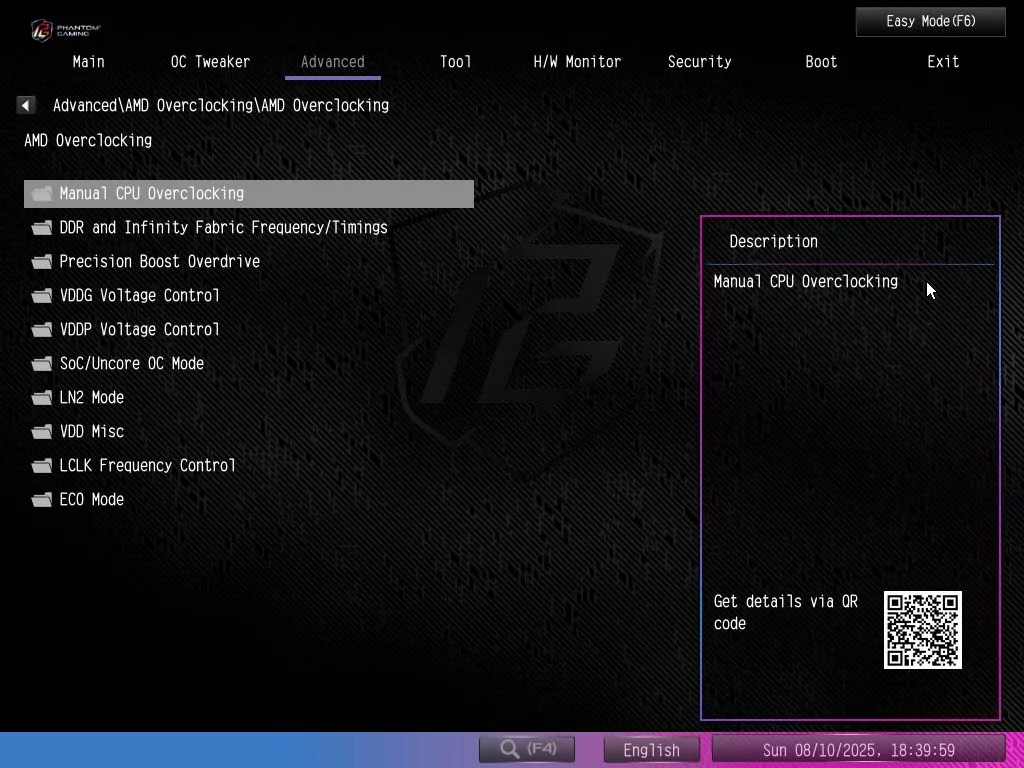
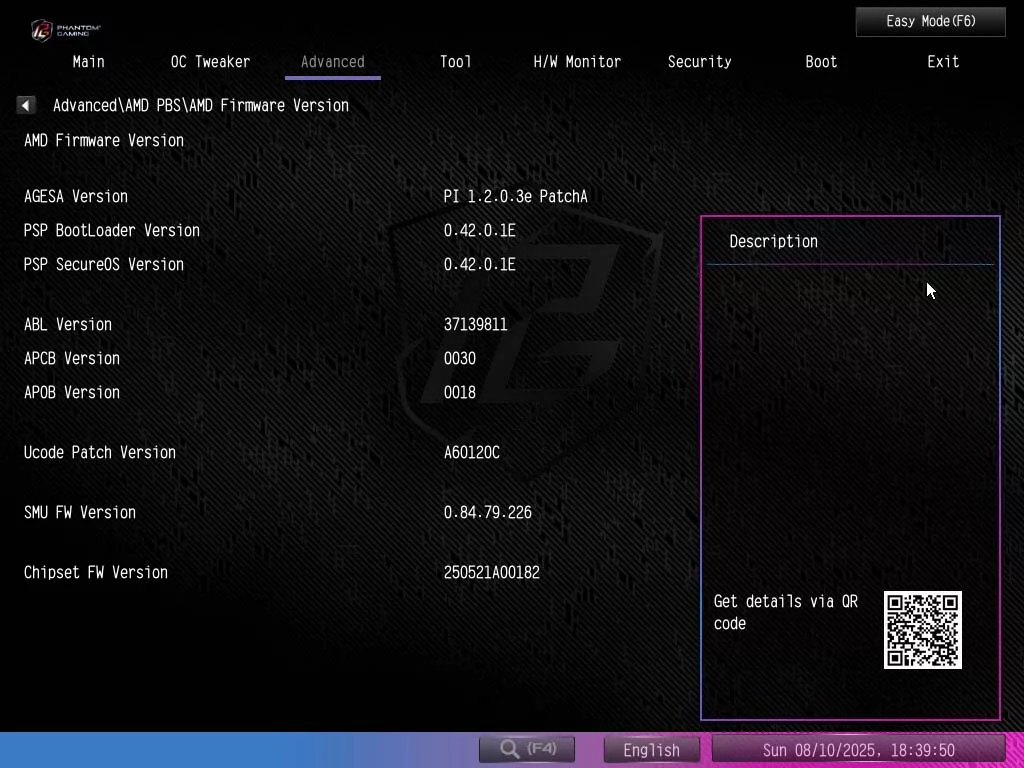
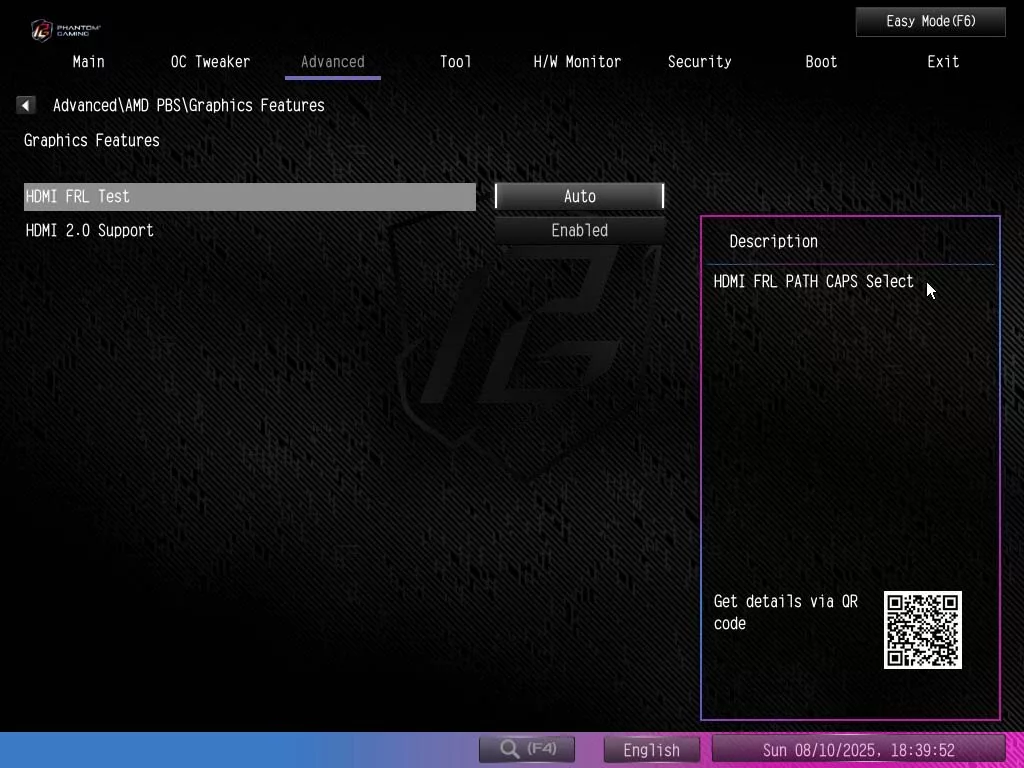
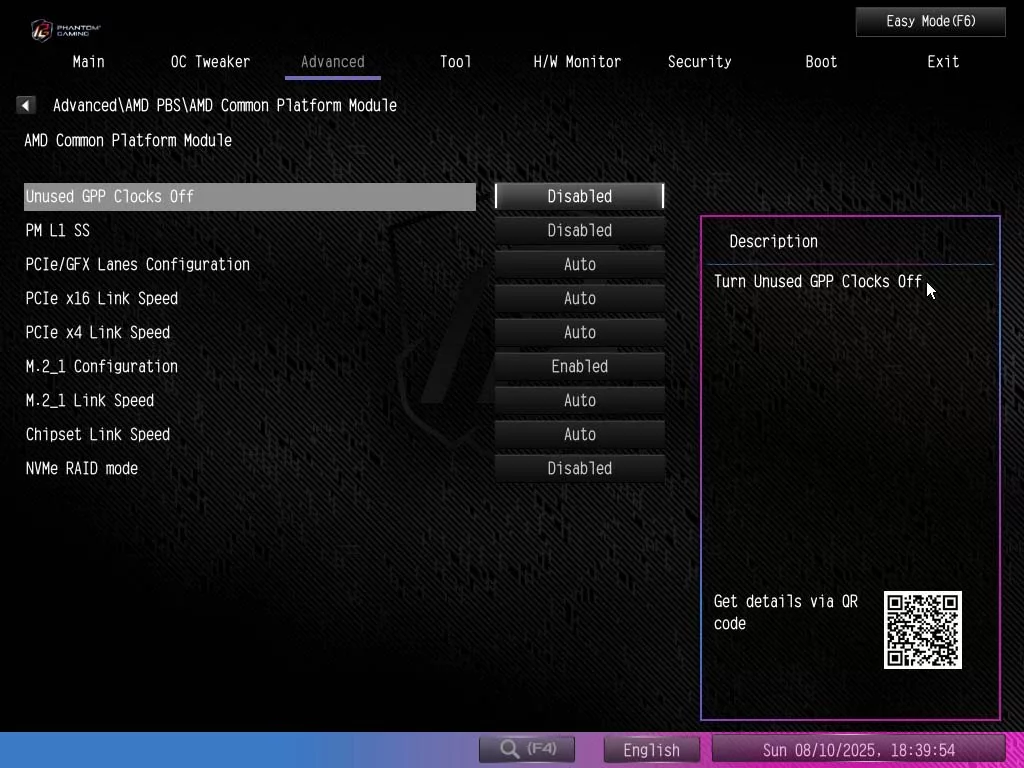

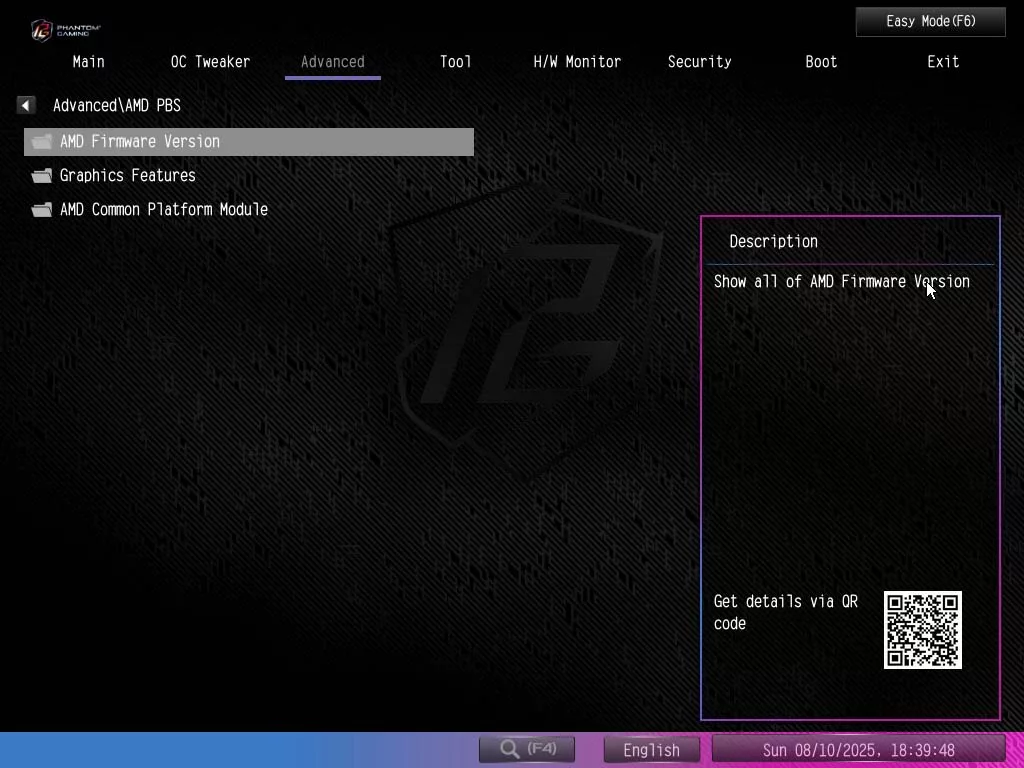
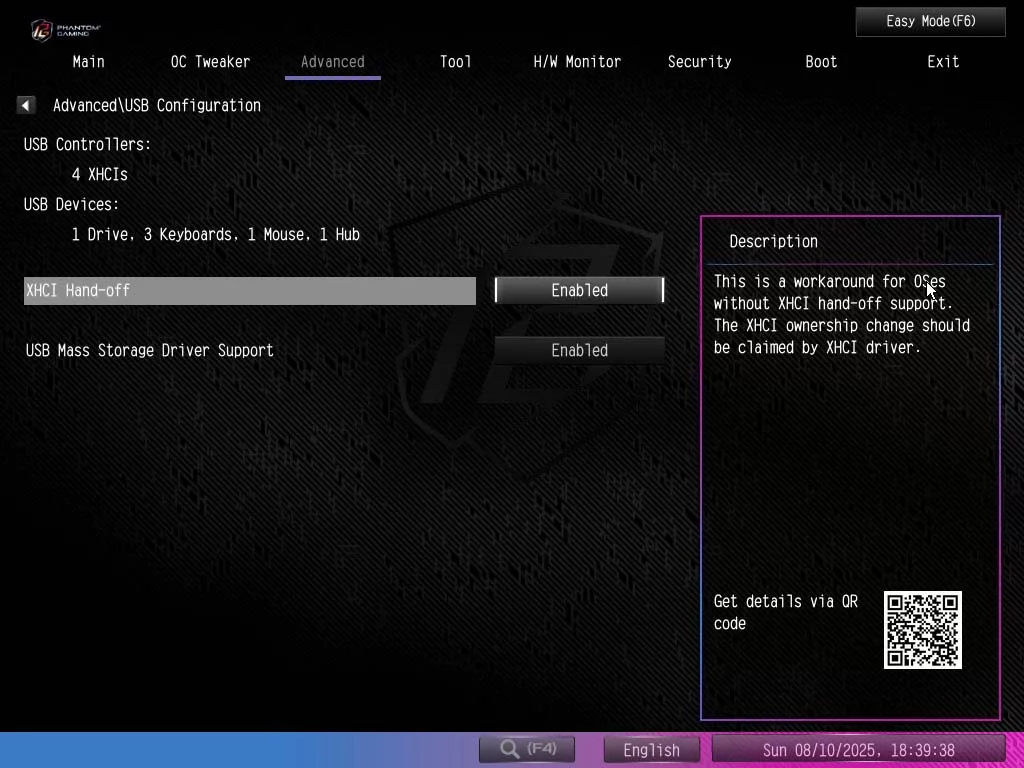
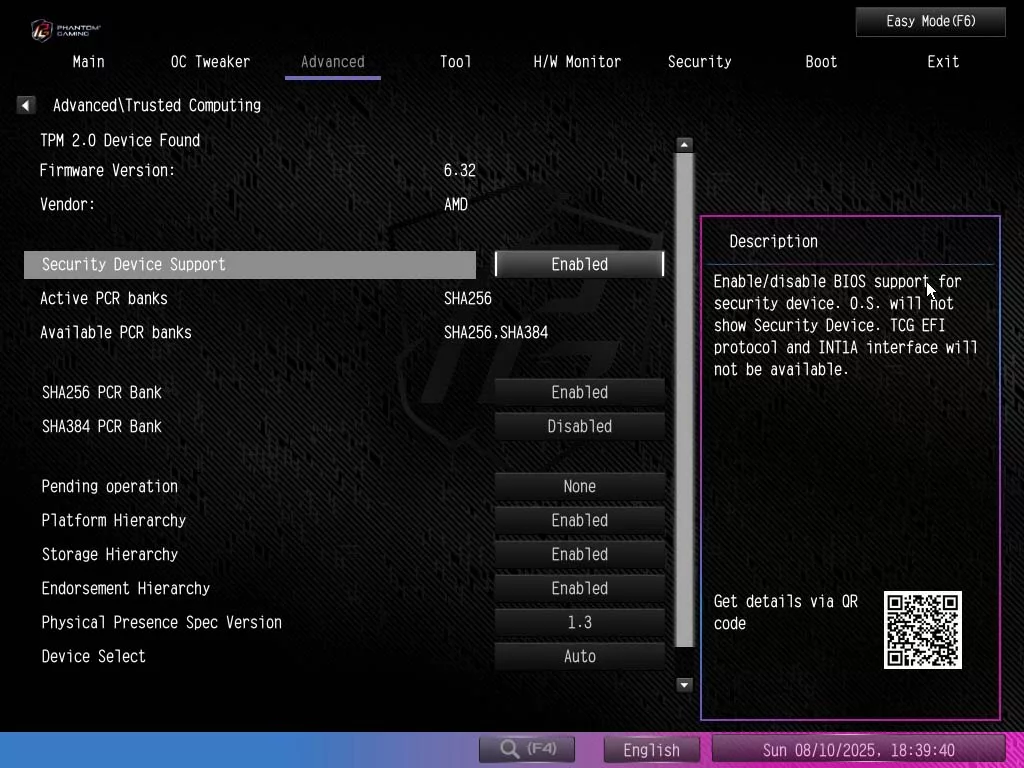
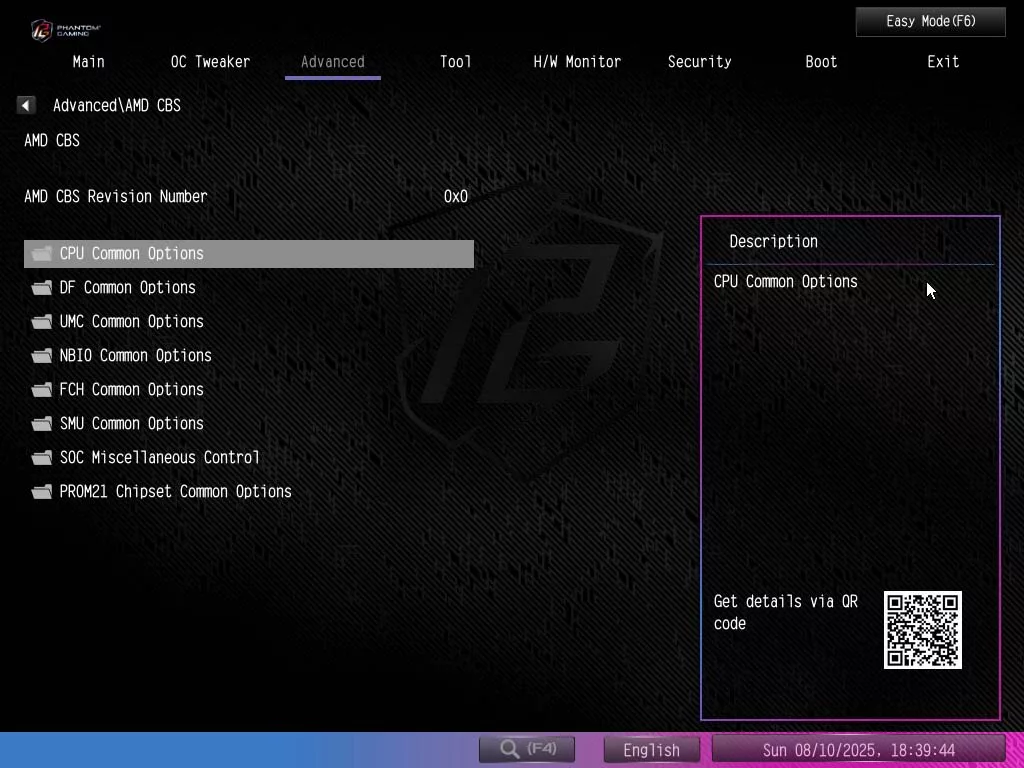
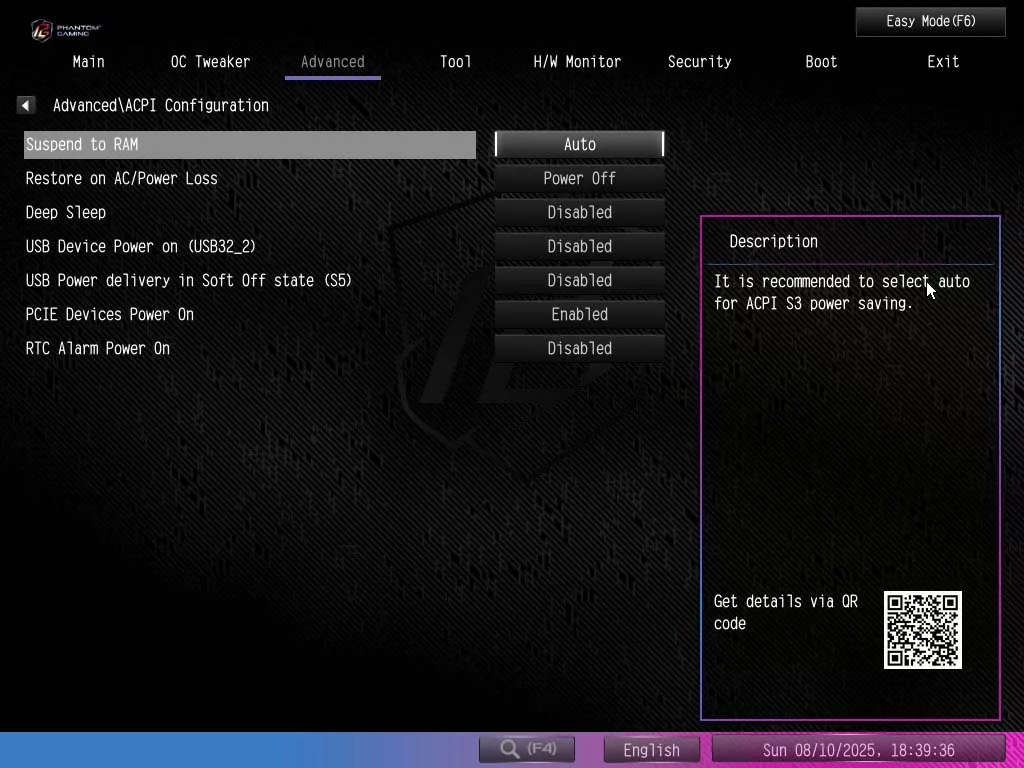
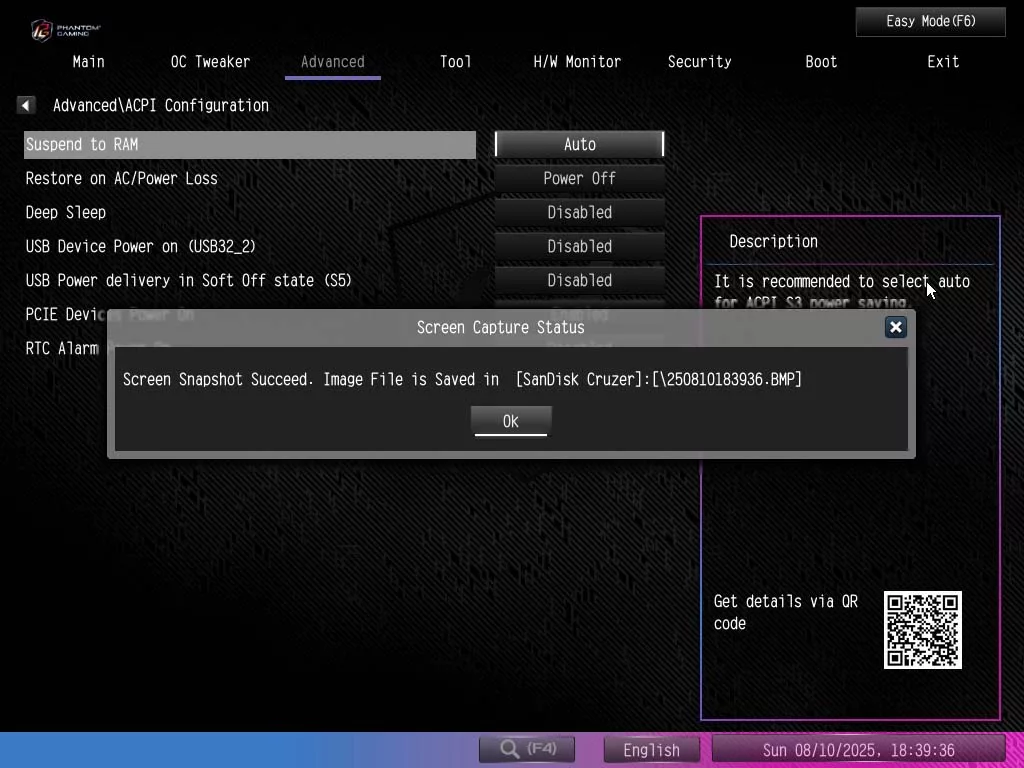
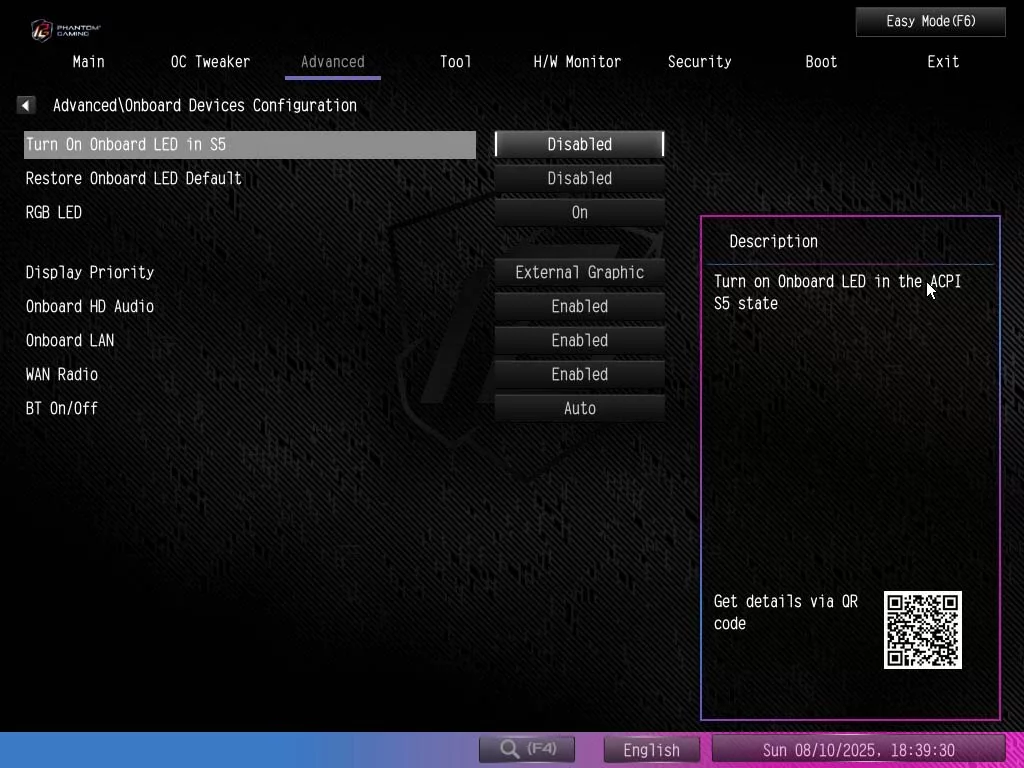
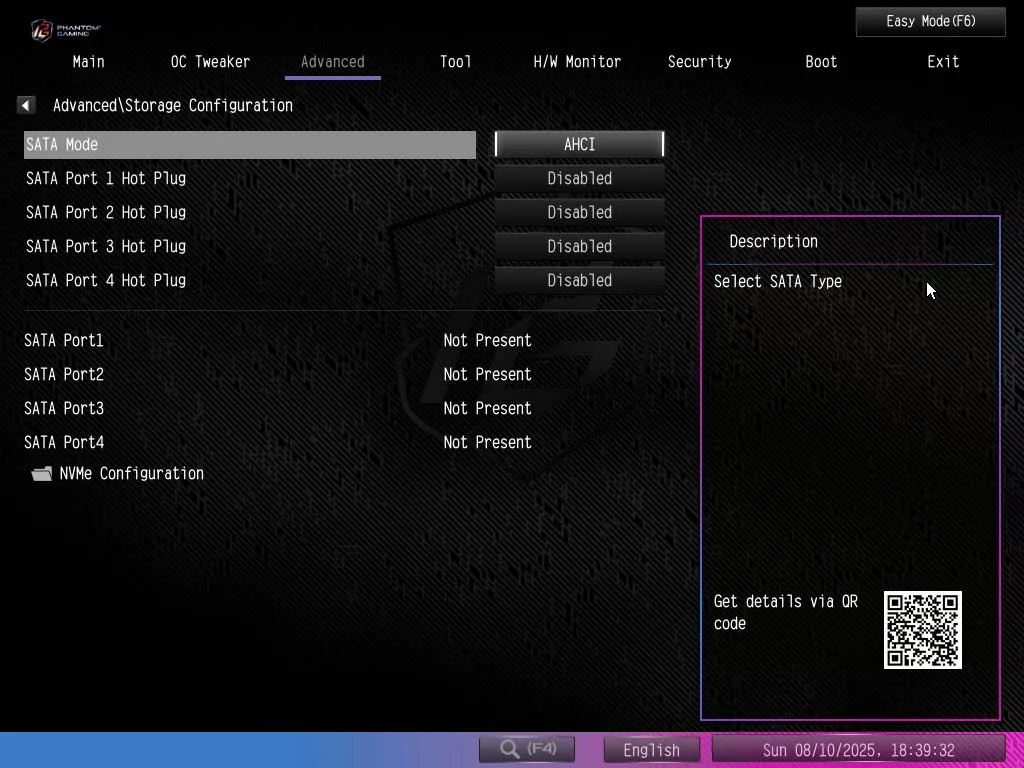
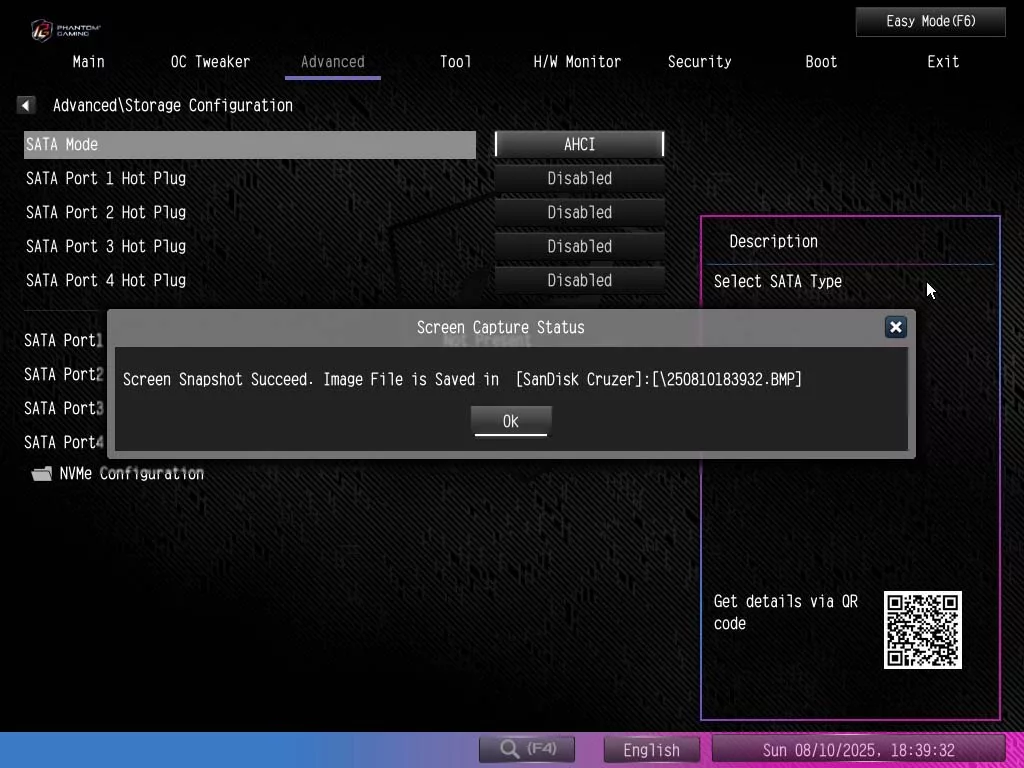
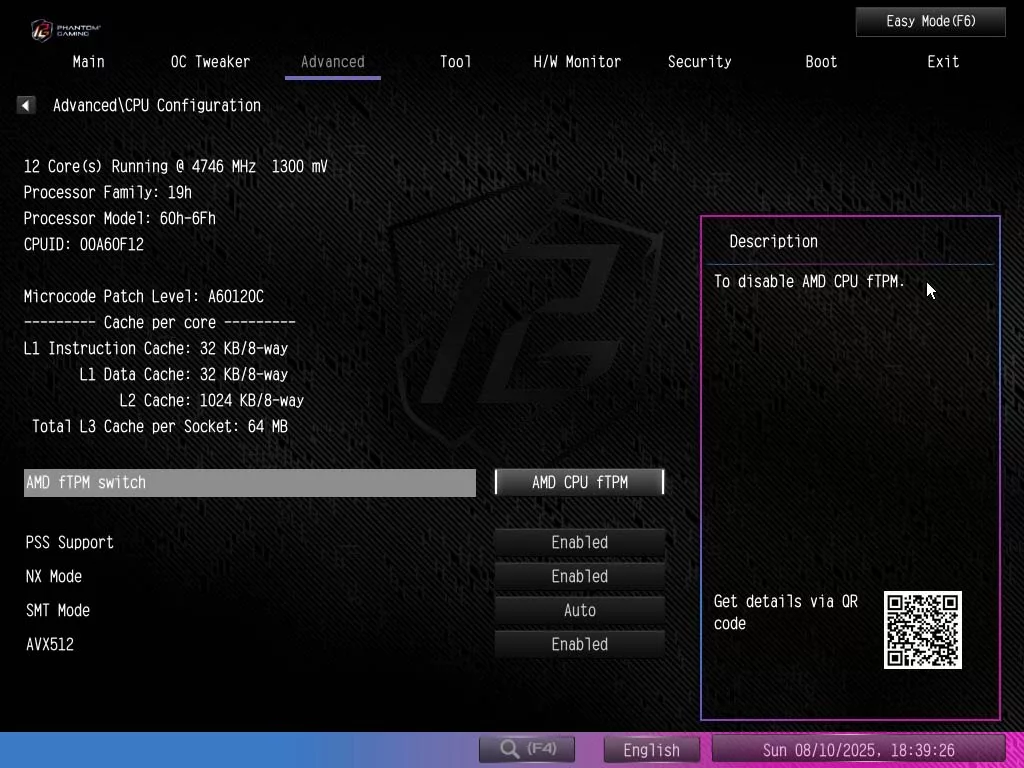
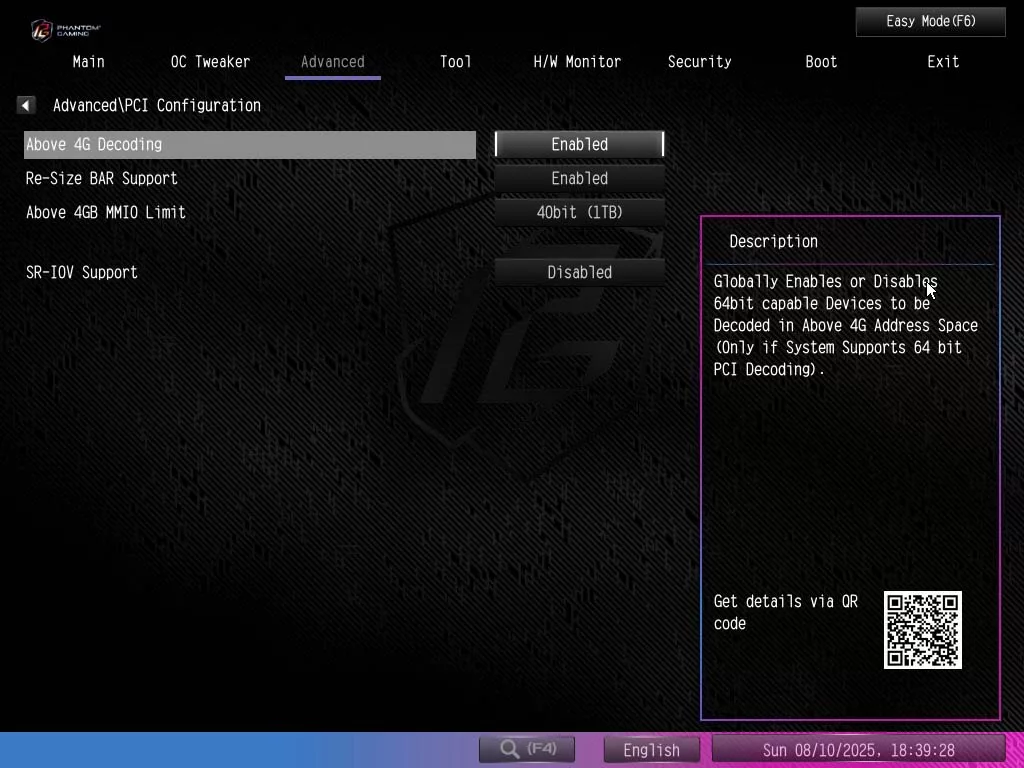
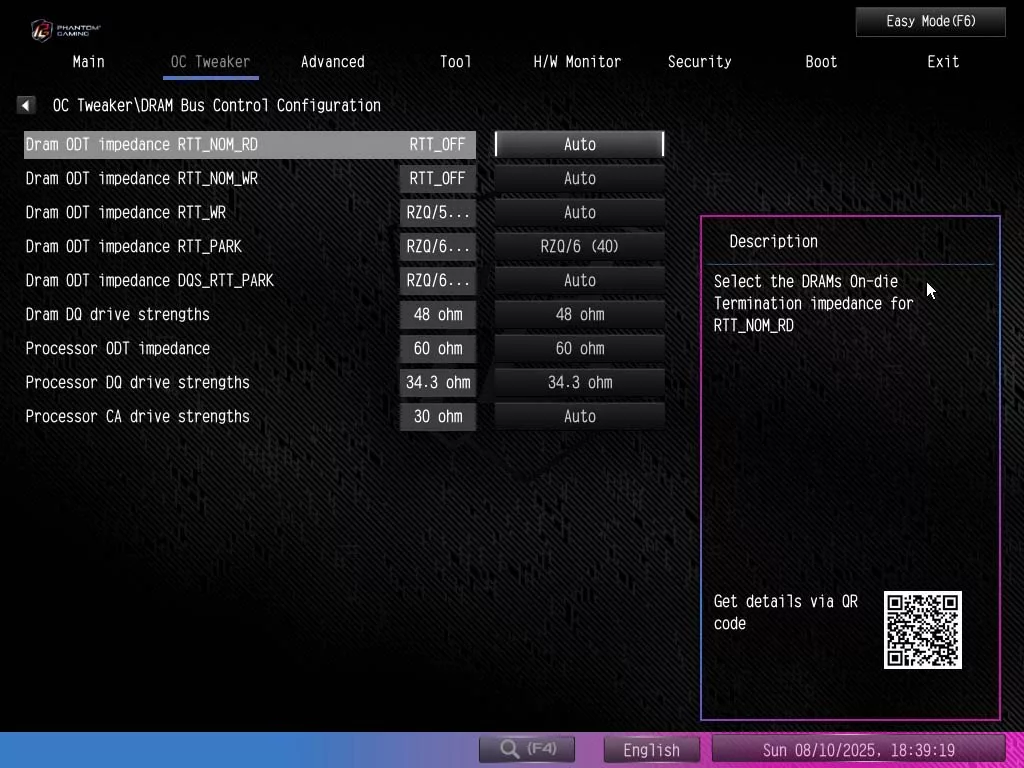
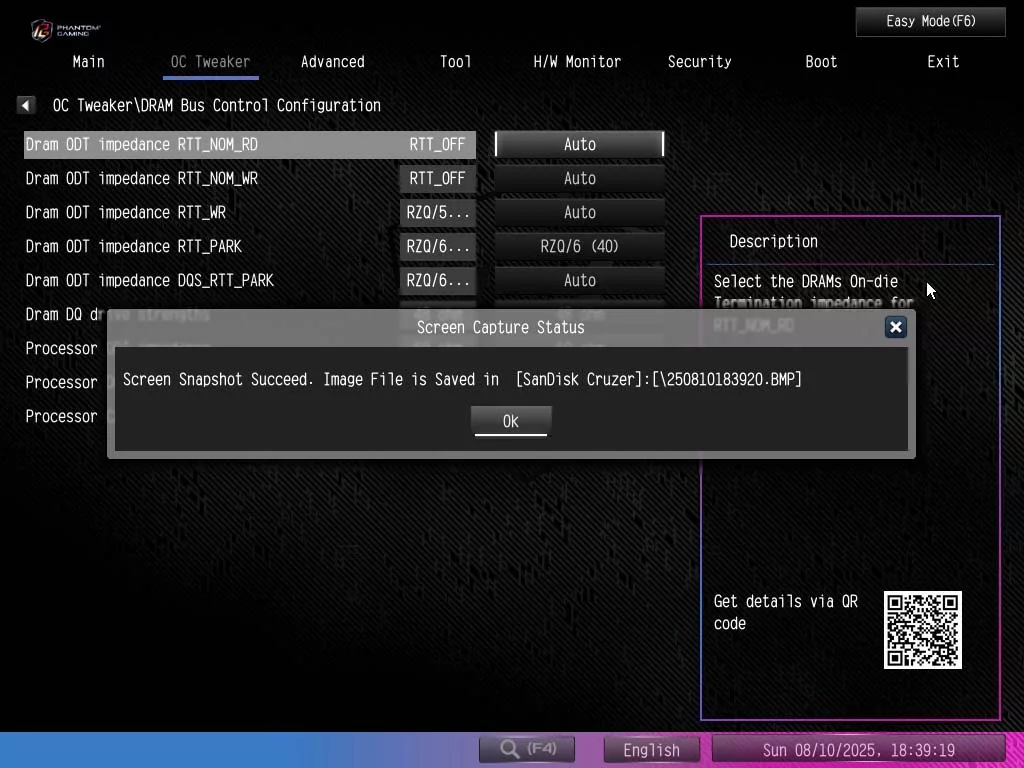
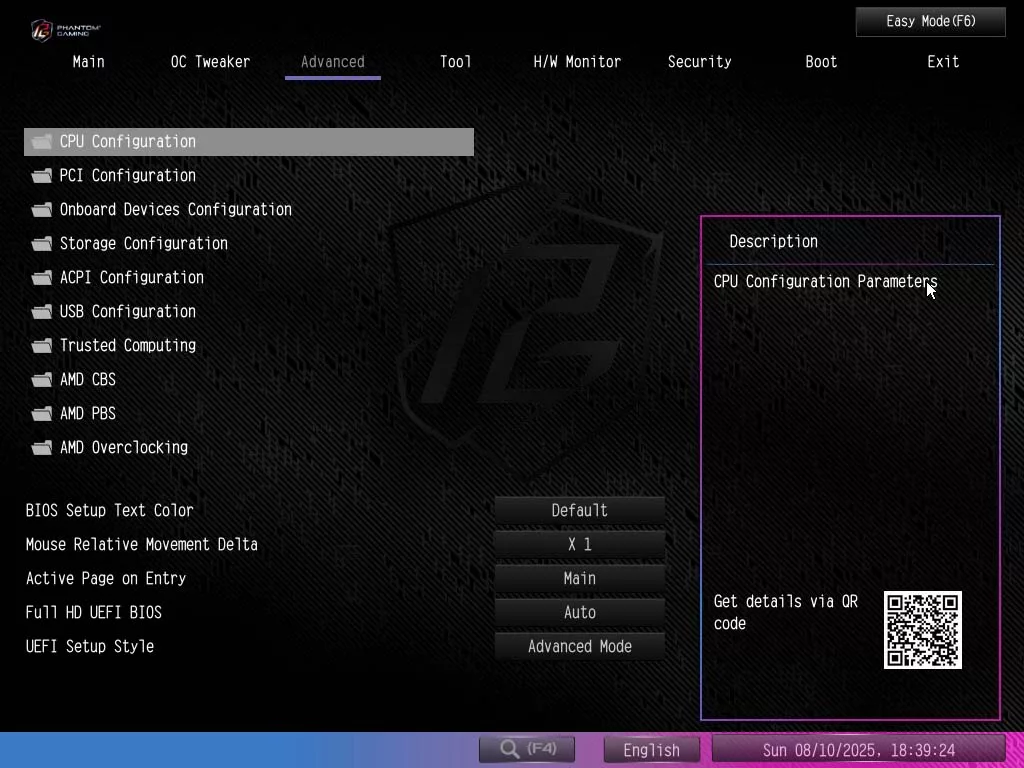
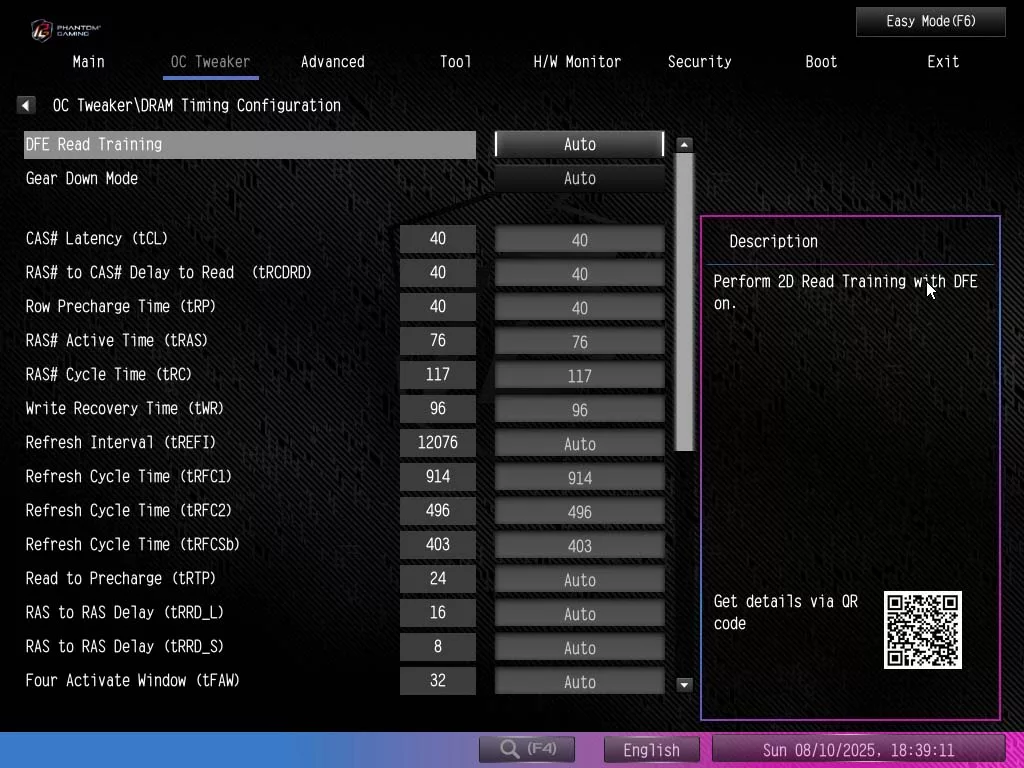

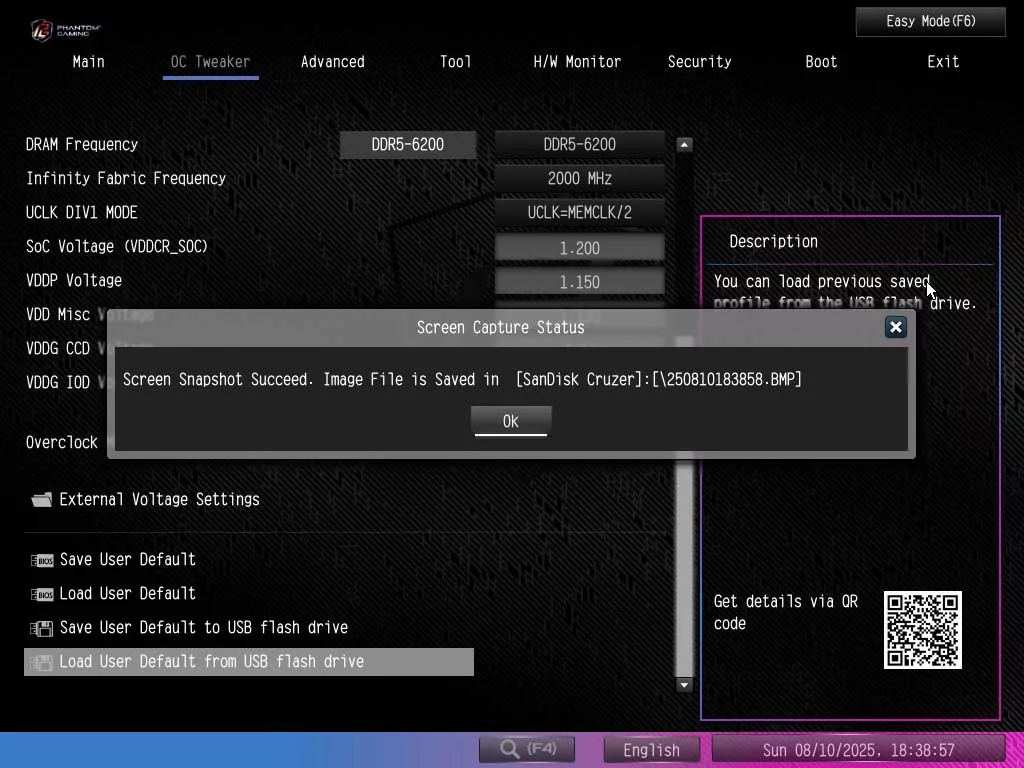
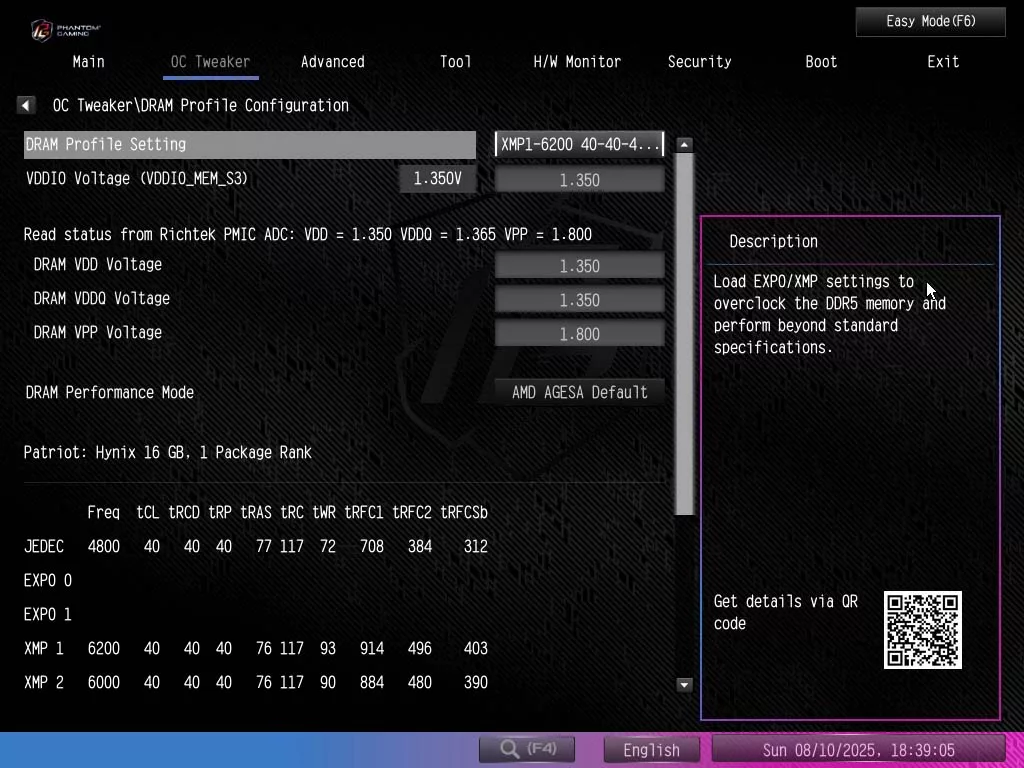
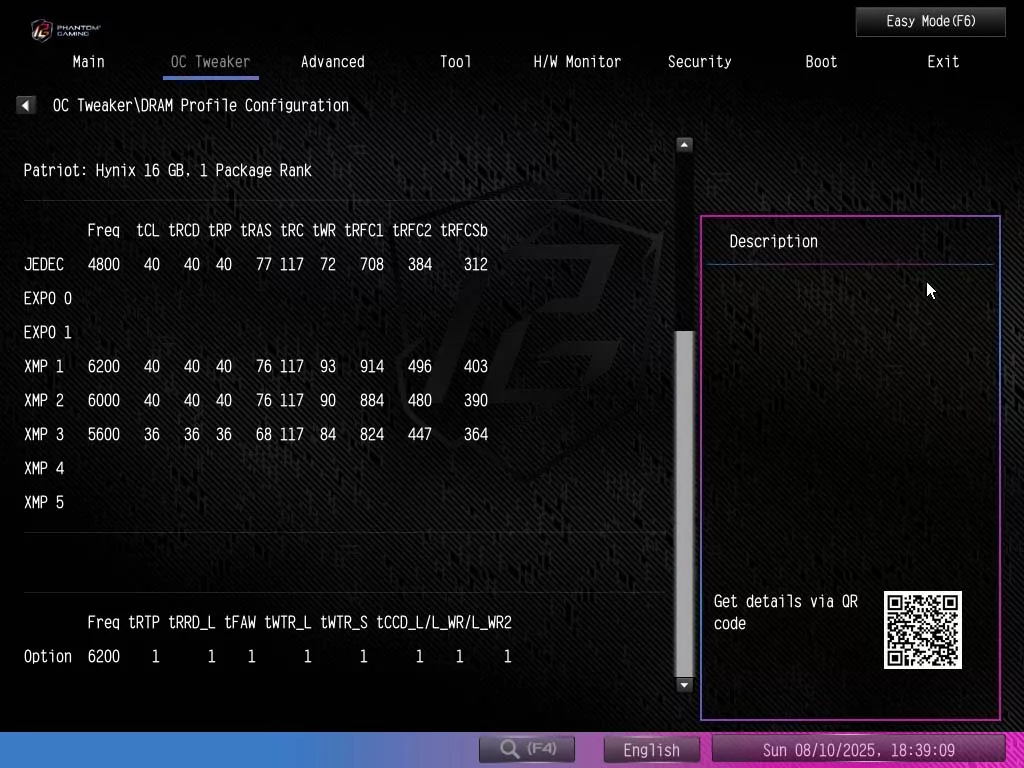
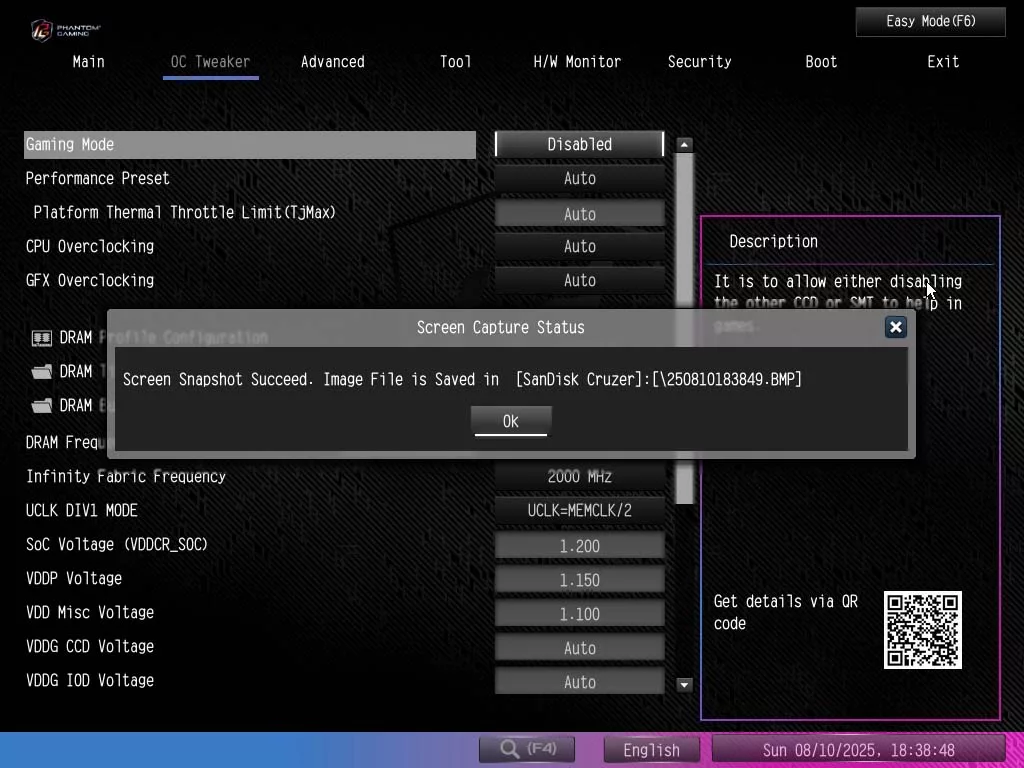
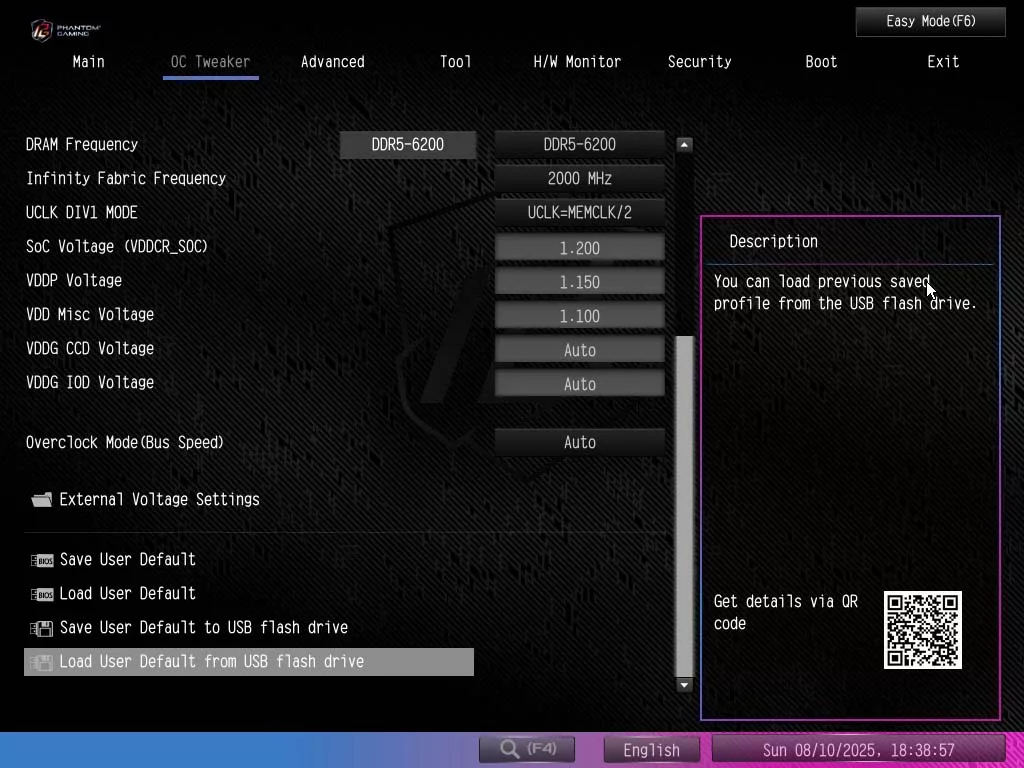
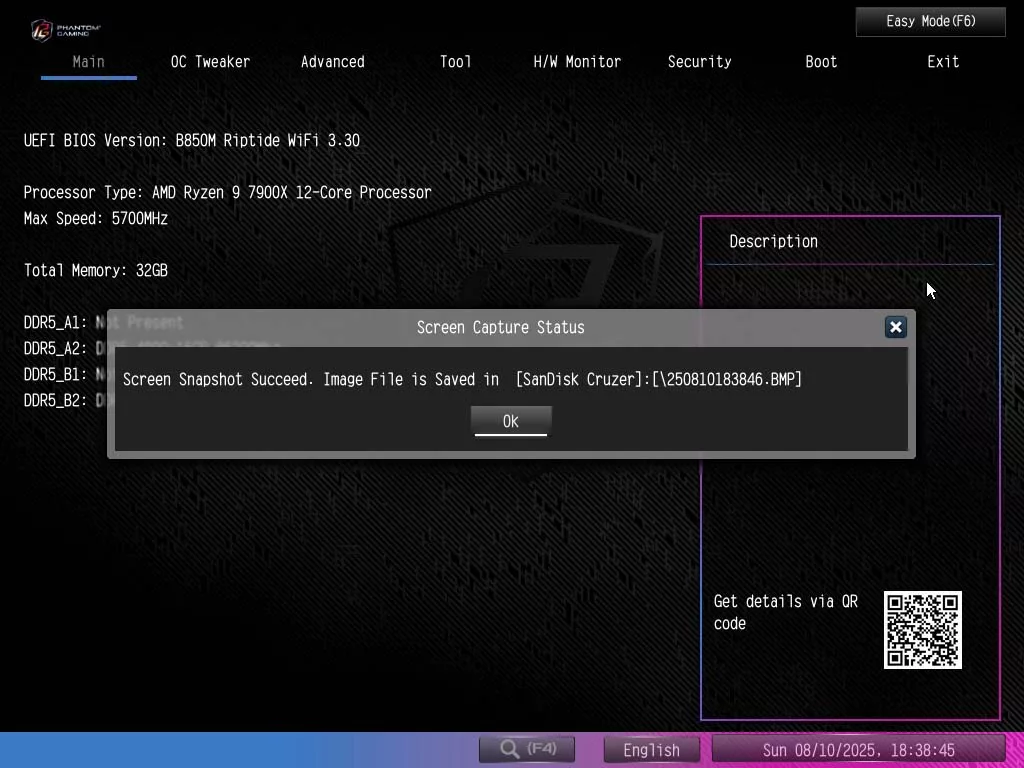
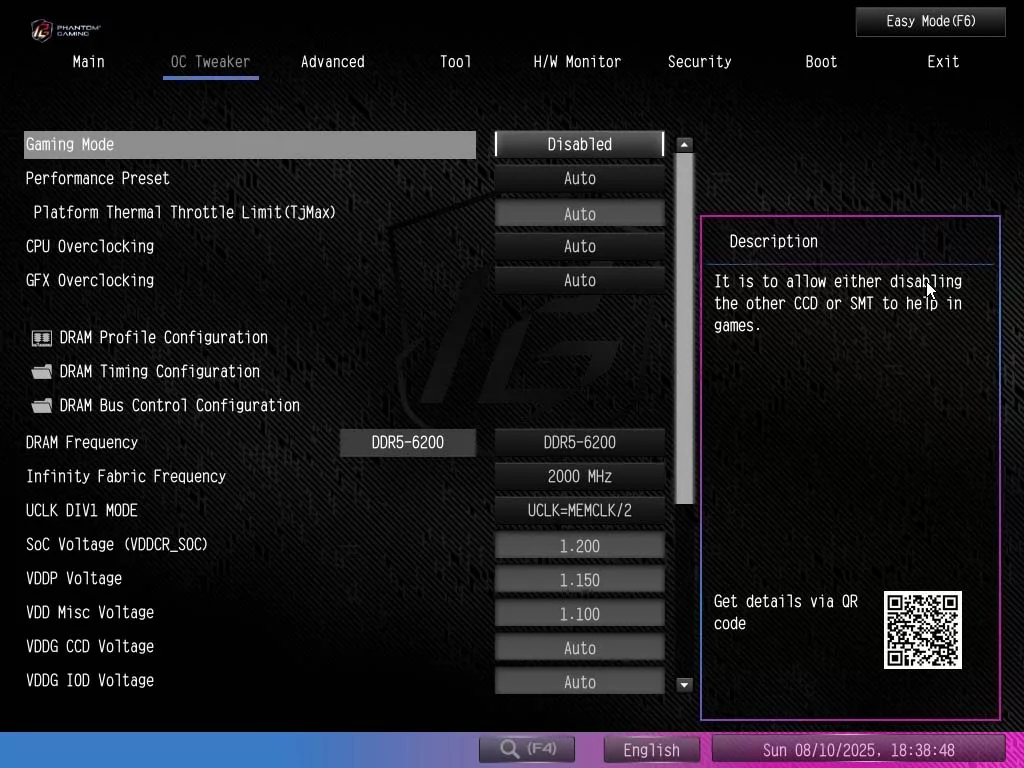
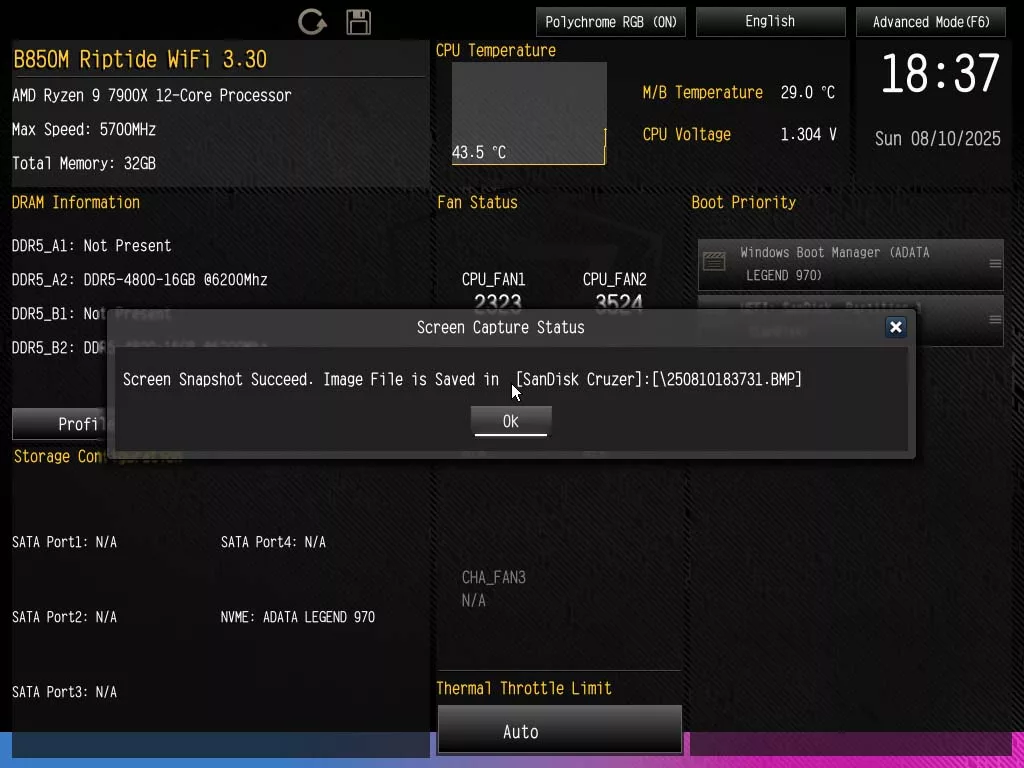
Motherboard Performance
As with all of our recent 2025 reviews, we will be using our new performance section. You will find images of all of our testing results in the gallery, while the following paragraphs summarize what we experienced. As always with our AMD 2025 reviews, we will have the Ryzen 9 7900X as the CPU of choice for testing.
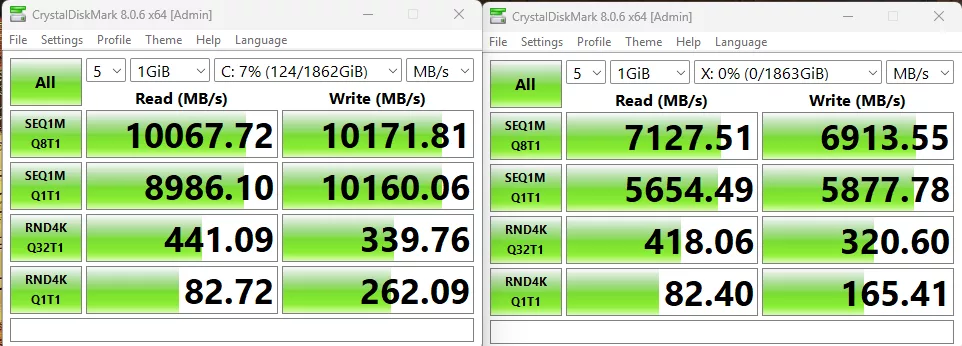
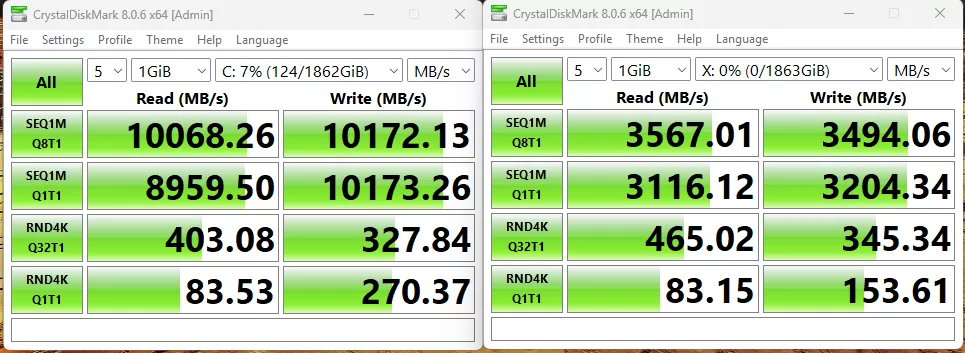
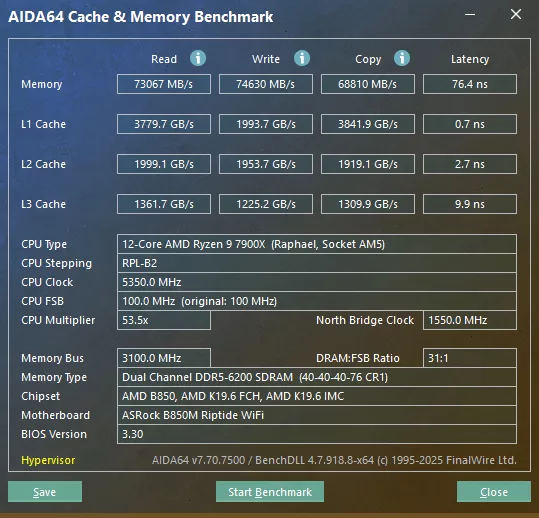
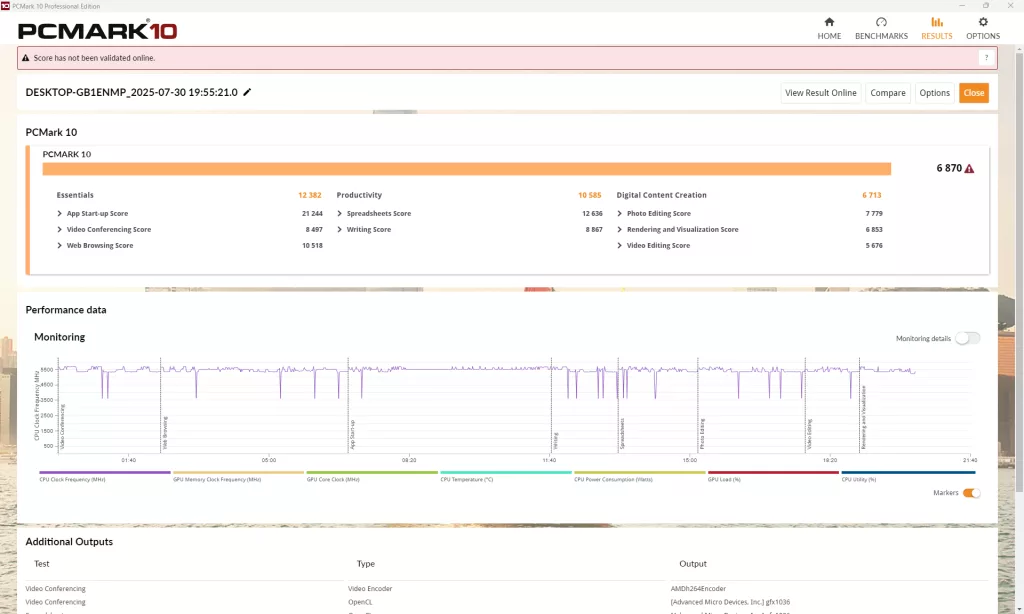
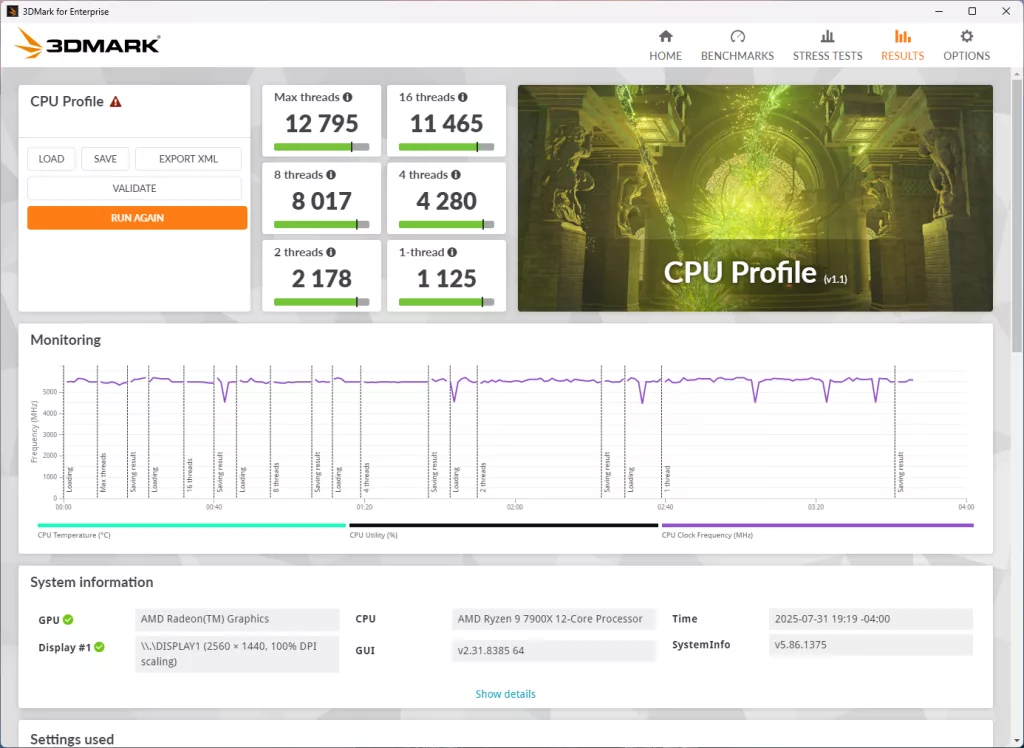
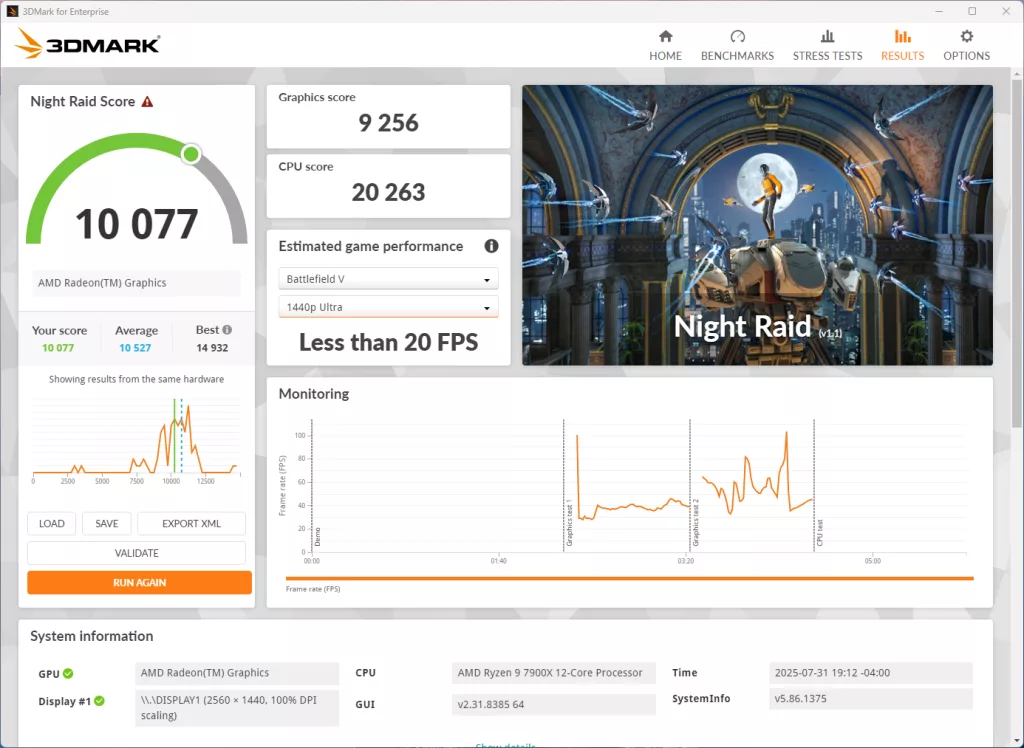
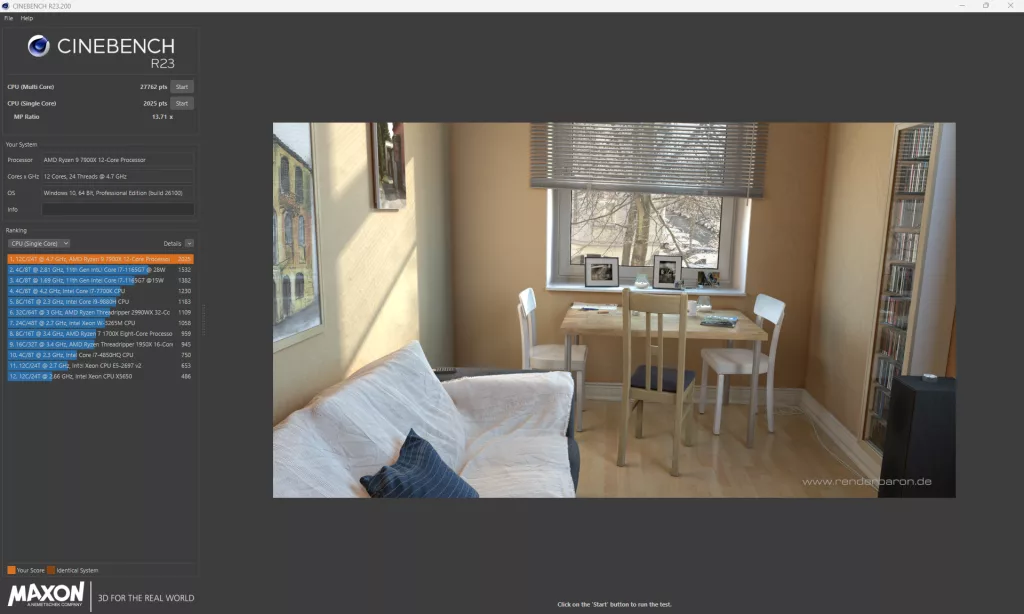
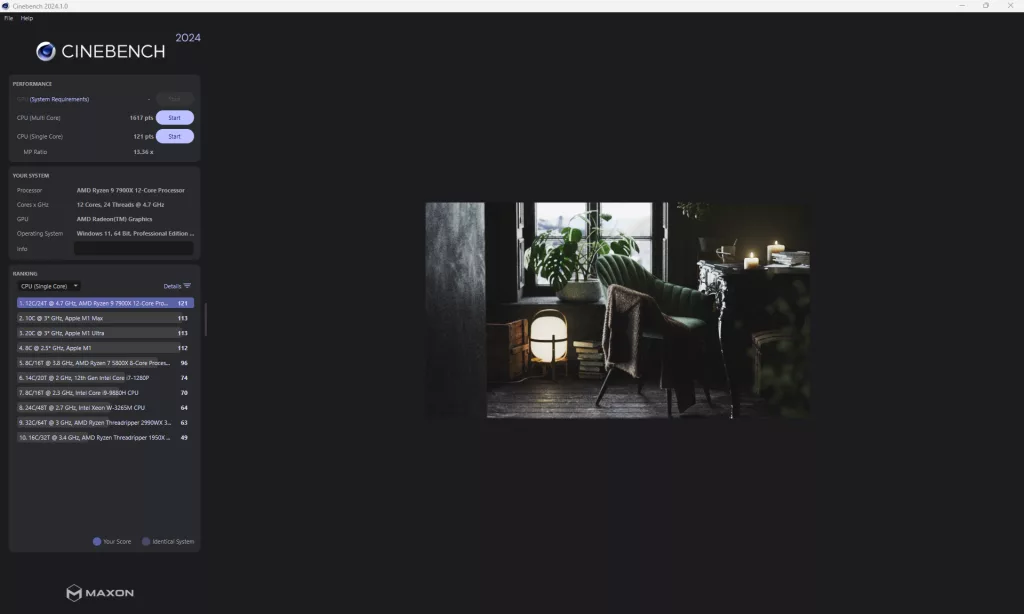
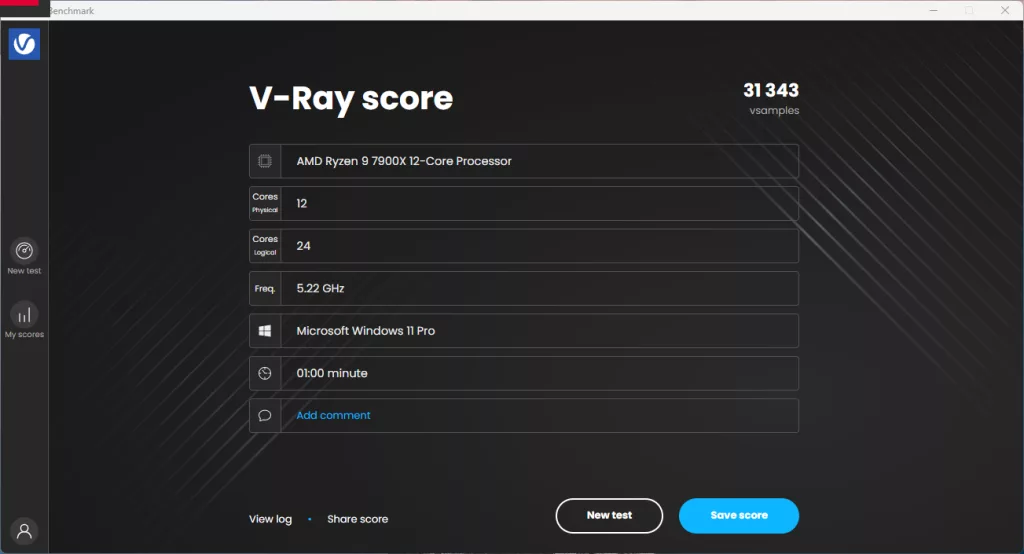
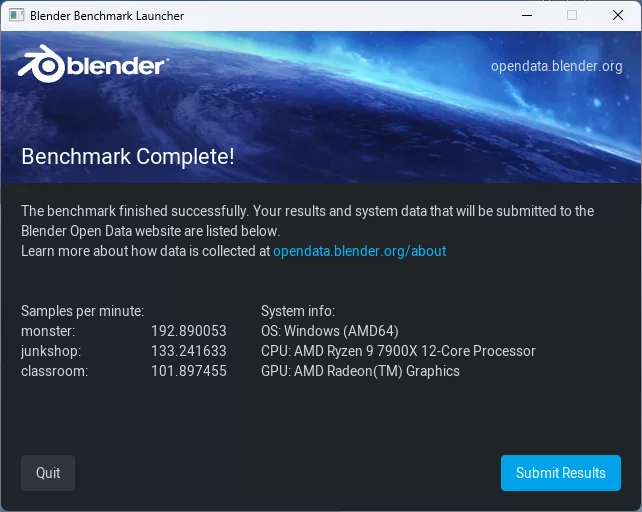
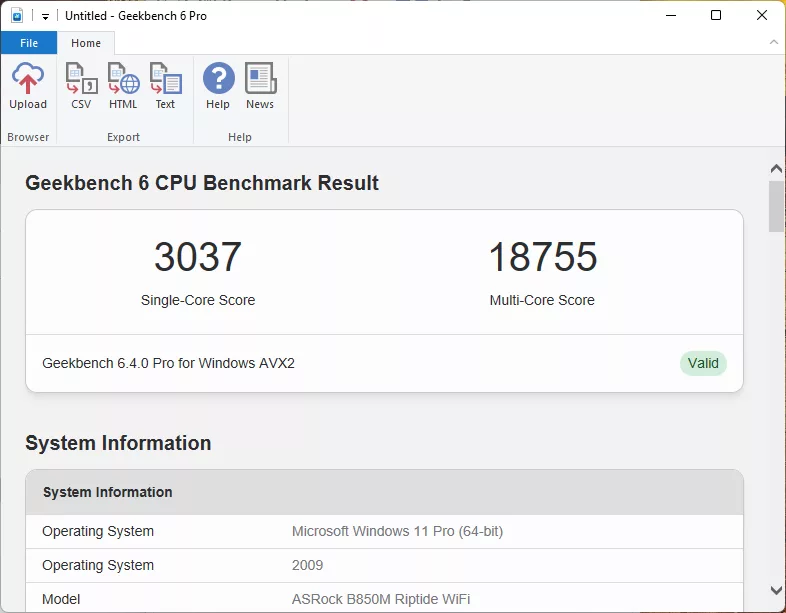
Our first point of testing, like always, is our storage test, and unlike normal, we are using our ADATA LEGEND 970 2TB NVME SSE as our primary drive due to fitment issues, and the MSI SPATIUM M570 PRO FROZR as the secondary drive. Unsurprisingly, your best results came from using the M2_1 and M2_3 slots (Due to the x2 speeds of M2_2), with the ADATA 970 coming in at 10,068 MB/s read and 10,172 MB/s write speeds, and the M570 running at 7,128 MB/s read and 6,914 MB/s write speeds. These are both in line with our expectations for them individually.
Next is our memory testing using AIDA64’s Cache & Memory Benchmark. With the ASRock B850M Riptide WIFI, our Patriot memory kit was able to achieve a Memory Read Speed of 73,067 MB/s, a Write Speed of 74,630 MB/s, and a Copy Speed of 68,810 MB/s. These are all slightly below our expected speeds for a B850 motherboard with this memory kit with the Ryzen 9 7900X CPU.
The synthetic benchmarks are next up, with PCMark, 3Dmark, Cinebench (R23 and 2024), V-Ray, Blender, and finally GeekBench6. PCMark continues the B850 trend we have seen with lower-than-expected scores, where we are coming in at 6,870, which is around 2,000 points lower than the X870E motherboards we have tested. 3DMark brings us back in line with our expected points, with the CPU Profile Max Thread score coming in at 12,795, and Night Raid scored 20,263 for its CPU score.
Both Cinebench tests are right around where we expect it to be, with R23 scoring 27,762 points in Multi-Core, and 2,2025 points in Single-Core testing. The more recent Cinebench 2024 comes in at 1,617 points for Multi-Core, and 121 points for Single-Core. V-Ray testing is again in line with what is expected at 31,343 vsamples. Blender had a score of 192.89 for monster, 133.24 for junkshop, and 101.89 for classroom scenes. The final test we have run is GeekBench 6 Pro, where we scored 3,037 for Single-Core, and 18,755 for Multi-Core, which is right in line with our historical values.
VRM Temperature
The last testing we completed on the ASRock B850M Riptide WIFI is the VRM temperature test. For this test, we run the Cinebench 2023 Multi-Core test for a minimum of 15 minutes to fully stress the system. At the 15-minute mark, we take a screenshot and record the temperatures as reported by the most current version of HWiNFO 64, as well as a manual temperature reading with a Handheld Infrared thermometer. All testing occurs at an ambient temperature of approximately 75°F (24°C).
The cooling on the ASRock B850M Riptide WIFI is one of the few spots for this motherboard that fell short, with the chipset coming in at a high point of 49.2°C in HWiNFO. As of the latest release at the time of testing, HWiNFO did not have any temperatures labeled as MOSFET cooling or similar. Our handheld readings gave us 51.5°C as the highest observed temperature on the MOSFET / power cooling area, and 45.0°C on the chipset.
Conclusion
In testing the ASRock B850M Phantom Gaming Riptide WiFi, we saw that it is capable of meeting the expected performance levels; however, its on-board cooling leaves a bit to be desired. Despite this, performance by the CPU, memory, NVMe drives, and chipset in general was not adversely affected compared to other mATX B850 motherboards we have tested to date.
Installation and Use
For the physical installation of the ASRock B850M Riptide WIFI on our test bench, we ran into no issues outside of a dropped screw when removing the M2_3 heatsink. All of the power plugs and onboard headers were where we expected to find them, and installation went smoothly.
Updating the UEFI was nothing special, and we ran into no issues when going deeper into the UEFI to explore and set our fan speeds to full and the EXPO settings to the highest speed on our Patriot DRAM kit. When we went to install Windows 11, we had no issues with updates being applied automatically and a prompt coming up to install ASRock’s installer software, which quickly found and installed all drivers. We did go and grab the latest chipset drivers from AMD itself just to be sure we had the latest prior to testing.
Final Points
The ASRock B850M Phantom Gaming Riptide WiFi is a capable mATX motherboard that would go well in any new gaming build in a smaller form factor. It’s three (3) NVMe slots and four (4) SATA ports allow for storage expansion, but it lacks in the total amount of USB ports or faster NVMe slots. Outside of this, users will be able to install any current-generation graphics card and remove it easily, thanks to the metal-reinforced slot and oversized retention clip. The ASRock B850M Riptide WIFI is on the lower end of ASRock’s range of gaming motherboards, and it did meet most of our performance targets; however, it does have the drawback of sub-par (compared to the competition) cooling for the chipset and power delivery, but that is to be expected at the $189.99 price tag.



